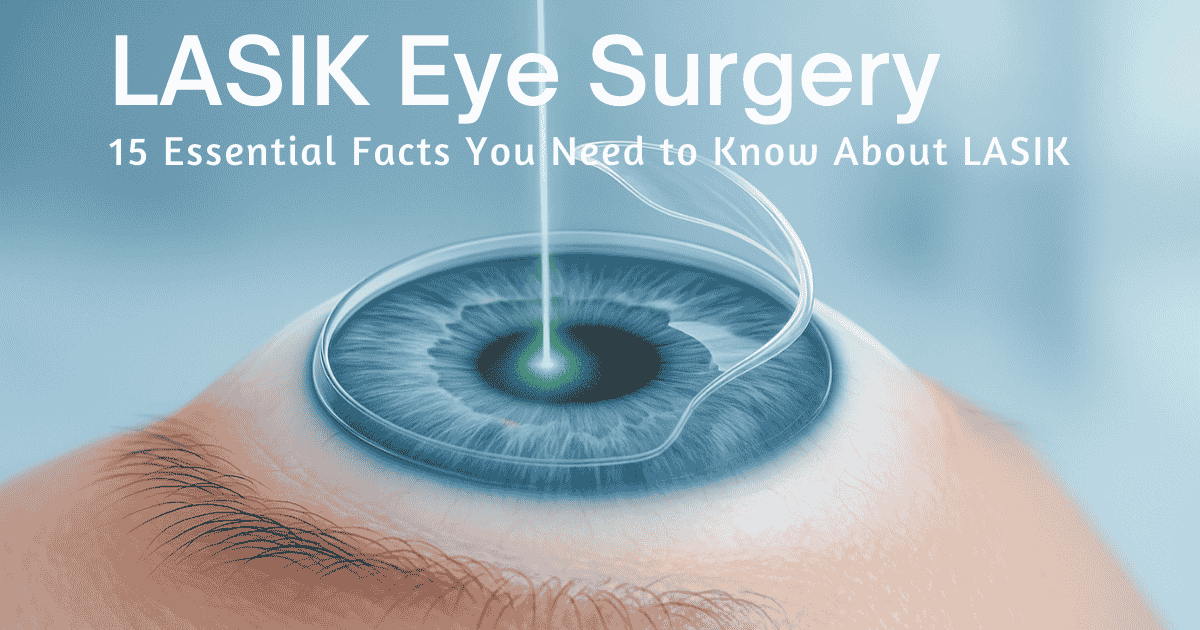
Thinking about getting lasik eye surgery? You’re not alone. Millions of people have turned to this popular eye surgery to ditch their glasses and contact lenses for good. But before you proceed, it’s important to understand what this laser eye surgery is all about.
LASIK, an acronym for Laser-Assisted In Situ Keratomileusis, is a prominent type of refractive surgery. This lasik procedure utilizes a specialized laser to reshape your cornea, the clear front part of your eye, effectively addressing common vision problems. These refractive errors include nearsightedness (myopia), farsightedness (hyperopia), and astigmatism, aiming for improved vision correction without ongoing reliance on corrective eyewear.
We will explore everything you need to know about lasik eye surgery, from the intricate details of how it works to what you can expect before, during, and after the eye surgery. Understanding the process helps you make an informed decision about your vision.
Table of Contents
How LASIK Eye Surgery Works
The lasik eye surgery process is remarkably quick and precise, designed to correct how light rays focus on your retina. At its core, LASIK involves carefully altering the cornea’s curvature. During the lasik procedure, an eye surgeon uses highly specialized lasers to achieve this.
Here’s a more detailed breakdown of what happens during the laser eye surgery:
- Your eye is thoroughly numbed using anesthetic eye drops to ensure comfort. You will remain awake throughout the eye surgery.
- A sophisticated instrument, either a femtosecond laser or a mechanical microkeratome, is used to create a very thin, precise flap in the outermost corneal tissue. This flap remains hinged to the eye.
- The surgeon gently lifts this corneal flap, similar to turning the page of a book, to expose the underlying corneal tissue, known as the stroma.
- An excimer laser, which is a cool ultraviolet light beam, is then used to remove microscopic amounts of corneal tissue. The laser removes tissue in a pre-determined pattern, specific to your refractive error, to reshape the cornea curves. For nearsightedness, the laser flattens the cornea; for farsightedness (called hyperopia), it steepens the cornea flat; and for astigmatism, it smooths the irregular cornea into a more normal shape.
- Once the reshaping is complete, the corneal flap is carefully repositioned back into its original place. It adheres naturally to the underlying stroma without the need for stitches, acting like a natural bandage.
The entire eye surgery typically takes less than 30 minutes to perform on both eyes. Many individuals report noticing an improvement in their vision almost immediately after the lasik procedure, though full visual stabilization and the clearest vision can take a few days to several weeks. The precision of the laser remove process is a key factor in the success of this vision correction technique.
LASIK Surgery Step-by-Step
Step 1: Numbing the Eye

Topical anesthetic drops are applied to ensure a pain-free LASIK procedure.
Step 2: Eyelid Stabilization

A speculum is gently used to hold the eyelids open and prevent blinking.
Step 3: Corneal Flap Creation

A femtosecond laser or microkeratome creates a thin flap on the surface of the cornea.
Step 4: Laser Reshaping of the Cornea

The excimer laser precisely reshapes the cornea to correct vision by adjusting its curvature.
Step 5: Repositioning the Corneal Flap

The corneal flap is carefully repositioned to its original location without stitches.
Step 6: Initial Post-Op Check and Eye Drops

Your eye doctor performs a quick post-op check and applies protective drops to aid healing.
Step 7: Healing and Eye Protection

Protective shields and rest support the healing process after LASIK surgery.
Step-by-step LASIK eye surgery process explained visually.
Are You a Good Candidate for LASIK Eye Surgery?
While lasik eye surgery offers significant benefits, not everyone is a suitable candidate for this type of refractive surgery. Your eye doctor will conduct a comprehensive eye examination and review your medical history to determine your eligibility. You can also take our free LASIK eligibility test online to see if you’re a suitable candidate.
These generally include:
- Being at least 18 years old, and often preferably in their early to mid-twenties, as vision can continue to change into early adulthood.
- Having a stable eyeglass or contact lens prescription for at least one to two years, indicating that their refractive error is no longer significantly progressing.
- Experiencing common vision problems such as myopia (nearsightedness), hyperopia (farsightedness), or astigmatism within a certain range of correction. Very high prescriptions might require alternative procedures. (LASIK for farsightedness)
- Possessing healthy eyes, free from diseases such as advanced glaucoma, cataracts, corneal disease (like keratoconus or corneal ectasia), or significant chronic dry eye that cannot be managed.
- Having adequate corneal thickness. The lasik procedure involves removing a small amount of corneal tissue, so your corneas must be thick enough to allow for flap creation and tissue ablation safely.
- Not being pregnant or nursing, as hormonal changes during these periods can affect vision stability and healing.
- Having realistic expectations about the outcomes of the eye surgery, understanding that while many achieve 20/20 vision or better, it doesn’t guarantee perfect vision or eliminate the possibility of needing glasses for certain tasks, especially as presbyopia (age-related farsightedness) develops.
Your eye surgeon will perform a detailed examination. This includes measuring your refractive error precisely, assessing your pupil size (especially in dim light conditions, as larger pupils can sometimes lead to more night vision symptoms like glare or halos), mapping your cornea’s surface (corneal topography), and measuring corneal thickness. These testing conditions help the eye doctor recommend the best course of action for your vision correction and determine if laser refractive surgery is a safe and effective option for you, or if an alternative like PRK or implantable lenses might be more suitable.
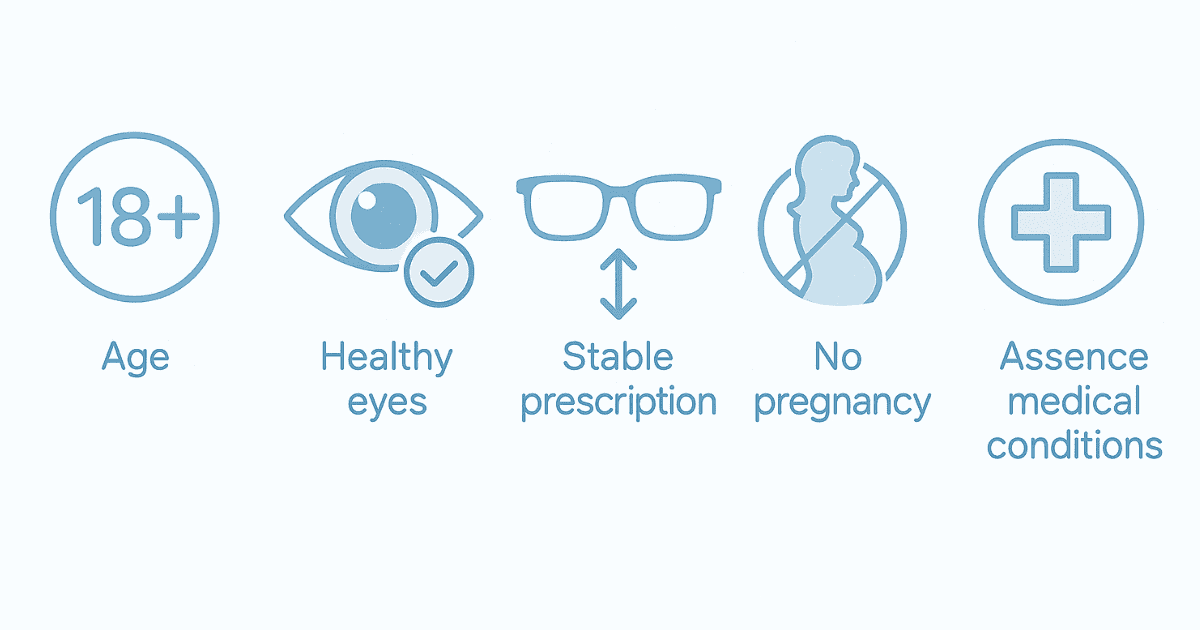
Preparing for LASIK Eye Surgery
Once you and your eye surgeon decide that lasik eye surgery is the right choice, careful preparation is essential for a smooth procedure and optimal outcome. Your eye doctor will provide specific instructions, but general preparatory steps are common. These steps help minimize risks and prepare your eyes for the laser eye surgery.
Key preparations usually involve:
- Discontinuing contact lens wear: You will need to stop wearing your contact lenses and switch to glasses for a specific period before your pre-operative consultation and the eye surgery itself. Contact lenses can temporarily alter the shape of your cornea, and wearing glasses allows your cornea to return to its natural shape, ensuring accurate measurements for the lasik procedure. The duration varies based on lens type (soft lenses typically require a shorter break than rigid gas permeable lenses).
- Arranging for transportation: You will not be able to drive yourself home immediately after the lasik eye surgery. Your vision will likely be blurry, and your eyes may be sensitive, so plan for someone to drive you to and from the clinic or international hospital.
- Avoiding eye makeup and other products: On the day of your eye surgery, do not wear any eye makeup, creams, perfumes, or lotions. These products can increase the risk of infection or interfere with the laser. It’s best to have a clean face.
- Fasting if instructed: Depending on the clinic’s protocol or if any mild sedation is planned, your eye doctor may ask you not to eat or drink for a few hours before the laser eye surgery. Always clarify this with your surgical team.
- Discussing medications: Inform your eye surgeon about all medications you are currently taking, both prescription and over-the-counter, as well as any supplements. Some medications might need to be adjusted or temporarily stopped.
During your pre-operative appointments, feel free to ask your eye surgeon any questions you have about the lasik procedure. Understanding the process can alleviate anxiety and help you feel more confident. This preparation phase is critical for a successful refractive surgery experience.
What to Expect During LASIK Eye Surgery
On the day of your lasik eye surgery, you will arrive at the surgical center, and the staff will guide you through the final preparations. Understanding the steps involved during the actual laser eye surgery can help ease any nervousness. The eye surgery itself is relatively brief.
Here’s a typical sequence of events during the lasik procedure:
- Numbing the eyes: Your eyes will be numbed with anesthetic eye drops. This ensures that you feel minimal discomfort during the eye surgery. You will be awake and aware throughout the process.
- Positioning and preparation: You’ll lie down on a comfortable reclining chair under the laser system. Your surgeon will position your head, and your eyelids will be cleaned. A small device called an eyelid speculum will be used to gently hold your eye open, preventing you from blinking during the laser refractive surgery.
- Corneal flap creation: A suction ring may be placed on your eye to stabilize it and slightly increase pressure. This is necessary for the creation of the corneal flap. You might experience a sensation of pressure, and your vision may dim or go dark for a few seconds. The flap is created using either a femtosecond laser (for “all-laser” or “bladeless” LASIK) or a microkeratome (a handheld bladed instrument).
- Corneal reshaping with the excimer laser: Once the thin flap is created and lifted, the eye surgeon will ask you to focus on a target light. The computer-guided excimer laser then precisely removes corneal tissue, reshaping your cornea. This part of the laser eye surgery usually takes less than 60 seconds per eye, and you might hear a rapid clicking sound from the laser. The laser removes corneal tissue based on the unique measurements taken during your pre-operative examination.
- Flap repositioning: After the laser has completed its work, the surgeon carefully repositions the corneal flap. The flap adheres naturally and begins to heal almost immediately without the need for stitches. Protective shields or goggles might be placed over your eyes.
Most individuals report feeling little to no pain during the lasik eye surgery, primarily experiencing sensations of slight pressure or vibration. Your eye surgeon and the surgical team will talk you through each step, ensuring you are as comfortable as possible. The efficiency of modern laser technology makes this a remarkably swift process to achieve clearer vision.
LASIK Eye Surgery Recovery
The recovery period after lasik eye surgery is generally quick, but your eyes will need some time to heal and for your vision to stabilize fully. Following your eye surgeon’s post-operative instructions carefully is crucial for a smooth recovery and the best possible results. You’ll likely notice an improvement in your vision very soon after the lasik procedure.
Here’s what you can typically expect during the recovery phase:
- Immediate post-surgery: Right after the eye surgery, your eyes may feel scratchy, gritty, or like there’s something in them. Mild discomfort, burning, or irritation is common for a few hours. Your vision will likely be blurry or hazy initially. It’s important not to rub your eyes.
- First 24-48 hours: Vision will typically improve significantly within the first day or two. However, you might experience temporary visual fluctuations, such as blurred vision or hazy vision. Light sensitivity is also common, so wearing sunglasses, even indoors initially, can be helpful. Your eye doctor will prescribe antibiotic and anti-inflammatory eye drops to prevent infection, reduce inflammation, and aid healing.
- Managing dry eyes: Many patients experience dry eye symptoms after laser eye surgery, which can last for several weeks or even months. This is because the lasik procedure can temporarily decrease tear production. Using preservative-free artificial tears (eye drops) frequently can help manage this discomfort. In cases of severe dry eyes, your eye surgeon might recommend additional management, such as punctal plugs, to help retain tears on the eye’s surface. Some patients may feel unusually dry sensations for a while.
- Follow-up appointments: You will have scheduled follow-up appointments with your eye doctor, usually the day after eye surgery, then again at one week, one month, three months, and six months. These visits allow your surgeon to monitor your healing progress and check your vision.
- Activity restrictions: You’ll need to avoid certain activities for a period. This includes refraining from rubbing your eyes, avoiding swimming pools and hot tubs to prevent infection, and not wearing eye makeup for about a week. Strenuous activities and contact sports should also be avoided for a few weeks as per your doctor’s recommend instructions.
- Long-term healing: While initial vision improvement is rapid, it can take up to three to six months for your vision to fully stabilize and achieve its final level of clarity. During this time, minor fluctuations are normal. Night vision disturbances like glare or halos around bright lights or in dim light may also occur but typically diminish over time.
Patience is key during the recovery from laser eye surgery. Adhering to all post-operative care instructions will support optimal healing and contribute to achieving excellent vision correction, helping you move away from the need to wear glasses or contact lenses for most daily activities. If you experience severe dry, persistent pain, or a sudden decrease in vision, contact your eye doctor immediately.
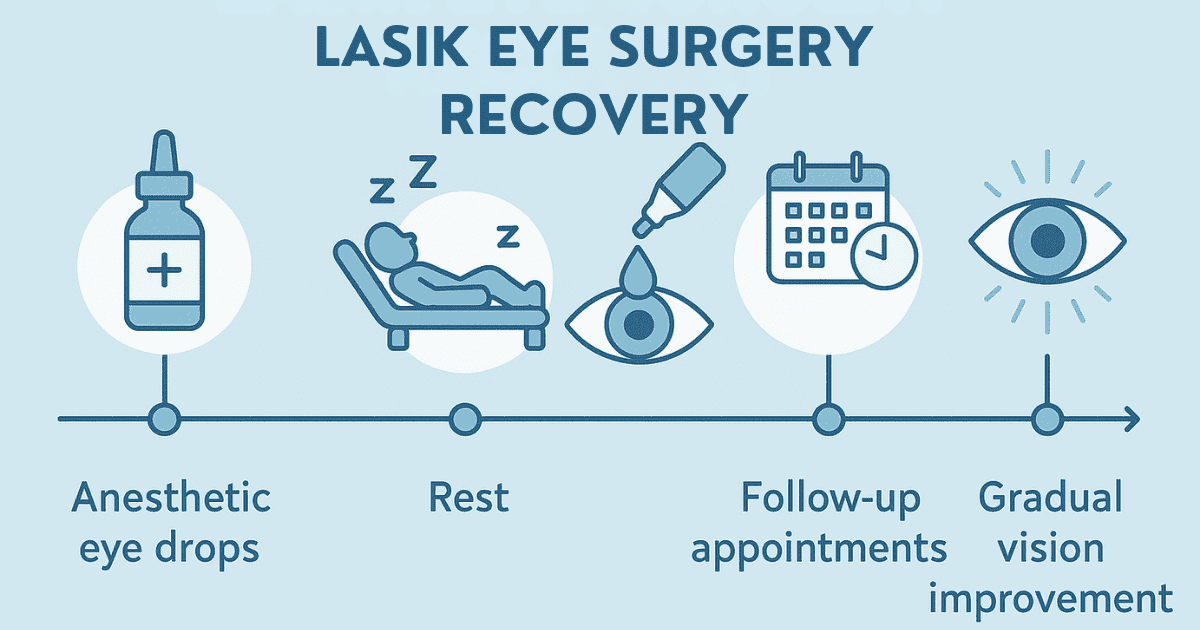
LASIK Eye Surgery Results
The vast majority of individuals who undergo lasik eye surgery are highly satisfied with their outcomes, experiencing a significant improvement in their vision. Most people achieve much clearer vision and a greatly reduced dependence on glasses or contact lenses. Many attain 20/20 vision or even better, allowing them to see distant vision sharply.
According to data from the American Refractive Surgery Council, over 90% of LASIK patients achieve vision that is 20/20 or better. An even higher percentage, around 99%, achieve 20/40 vision or better, which is the legal requirement for driving in most states without corrective lenses. These results highlight the effectiveness of laser eye surgery for vision correction.
It’s important to understand that while the goal is to provide excellent unaided vision, results can vary based on individual factors. These include the severity of your initial refractive error, your age, your eye’s healing response, and the specific laser technology used. Your eye surgeon will discuss realistic expectations with you based on your unique eye characteristics and vision problems. Some individuals with very high prescriptions may still need glasses for certain activities, like night driving, or for reading, especially as they age and develop presbyopia (the age-related need for reading glasses for objects close up). Even if you don’t achieve perfect 20/20 vision, the improvement in your quality of life due to significantly better vision can be substantial. The long-term problem of daily eyeglass wear is often resolved for many years.
Potential Risks and Side Effects of LASIK Eye Surgery
While lasik eye surgery is widely considered safe and effective, like any surgical procedure, it carries potential risks and side effects. Most side effects are temporary and resolve as the eyes heal, but some can be more persistent or require further treatment. Understanding these possibilities is an important part of making an informed decision about laser refractive surgery.
Common or potential side effects include:
- Dry Eyes: This is the most common side effect. Symptoms can range from mild irritation to more significant discomfort (severe dry eyes). It typically improves over weeks or months as tear production normalizes, but for some, it can be a long-term problem. Your eye surgeon will likely recommend eye drops (artificial tears) and may suggest other treatments if you experience severe dry eye symptoms or if you feel unusually dry.
- Glare, Halos, and Double Vision: You might experience glare, halos around bright lights (especially at night), or even double vision. These symptoms are often more noticeable in dim light conditions and usually diminish as your eyes heal over several months. However, in some cases, they can persist. To learn more, see our full guide on common LASIK side effects and how to manage them.
- Under-correction, Over-correction, or Astigmatism: Not every patient achieves perfect vision correction. Sometimes, the laser removes too little tissue (under-correction) or too much (over-correction). Uneven tissue removal can also induce or worsen astigmatism. These issues might require a second laser eye surgery (enhancement) or the continued use of glasses or contact lenses for certain activities.
- Flap Problems: Complications related to the corneal flap are rare but can occur. These include flap dislocation, wrinkles in the flap, inflammation under the flap (Diffuse Lamellar Keratitis or DLK), or epithelial ingrowth (when cells from the outermost corneal tissue layer grow beneath the flap). These flap problems usually require additional medical or surgical intervention by the eye surgeon.
- Vision Loss or Changes: Extremely rarely, patients may experience a loss of best-corrected vision. This means that even with glasses or contacts after the eye surgery, vision is not as sharp as it was before the procedure. This is very uncommon with modern LASIK techniques.
- Corneal Ectasia: A very rare but serious complication is corneal ectasia. This condition involves a progressive thinning and bulging of the cornea, leading to worsening vision and potentially requiring more complex treatments like corneal cross-linking or even a corneal transplant. Careful pre-operative screening to identify risk factors is crucial to prevent this.
- Infection or Inflammation: As with any eye surgery, there’s a small risk of infection or significant inflammation. Adhering to post-operative care, including using prescribed eye drops, minimizes this risk. If symptoms like increasing pain, redness, or discharge occur, immediate medical attention from your eye doctor is necessary.
- Temporary Visual Disturbances: Many patients experience a temporary decrease in the sharpness of their vision or fluctuations in vision during the healing period. These temporary visual changes typically resolve. Light sensitivity can also occur for some time after the surgery.
Your eye surgeon will discuss these risks in detail with you during your consultation. They will also explain how these risks apply to your specific situation and what measures are taken to minimize them. If you experience severe dry eyes or other concerning symptoms post-surgery, your doctor may recommend additional management.
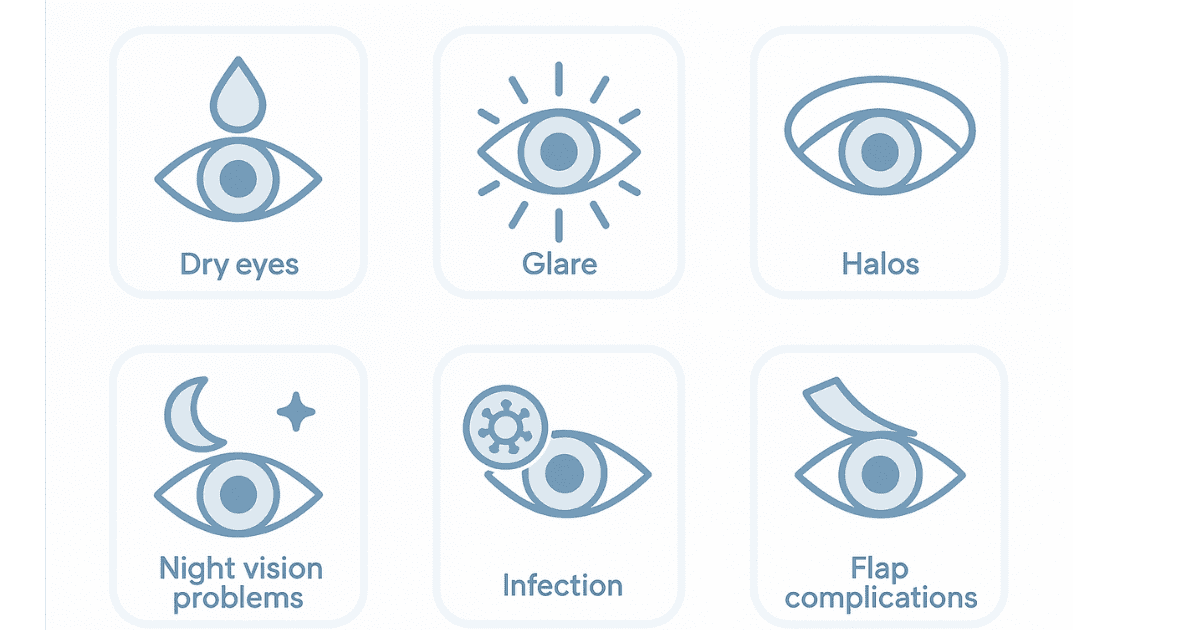
The Cost of LASIK Eye Surgery
The cost of lasik eye surgery can be a significant factor for many individuals considering the procedure. Prices can vary considerably based on several elements. On average, you might expect to pay between $2,000 and $3,000 per eye in the United States, but this figure can be higher or lower.
Factors that influence the cost of laser eye surgery include:
- Geographic location: Costs often differ between urban and rural areas, and from one city or state to another. An international hospital may have different pricing structures. For a global price comparison, check out our guide to the best countries for affordable LASIK surgery.
- Surgeon’s experience and reputation: Highly experienced eye surgeons or those with a distinguished reputation may charge more.
- Technology used: The type of laser technology employed (e.g., advanced femtosecond lasers for flap creation, wavefront-guided or topography-guided excimer lasers for corneal reshaping) can impact the price. Newer, more customized technologies often come at a premium.
- Extent of vision correction needed: The complexity of your refractive error might influence the cost.
- What’s included in the fee: It’s important to clarify what the quoted price covers. Comprehensive packages often include the initial consultation, the lasik procedure itself, all post-operative follow-up visits for a specified period (e.g., one year), and potentially the cost of an enhancement surgery if needed within a certain timeframe.
Most health insurance plans do not cover lasik eye surgery because it’s generally considered an elective or cosmetic procedure rather than a medically necessary one. However, it’s always worth checking with your insurance provider. Some vision plans might offer a partial benefit or a discount. Many eye surgery clinics offer financing options, such as payment plans, to help make the cost more manageable. Additionally, funds from a Flexible Spending Account (FSA) or Health Savings Account (HSA) can often be used to pay for laser eye surgery, providing a tax-advantaged way to cover the expense. Always discuss costs upfront with the clinic to avoid any surprises and understand all financial aspects before committing to the eye surgery.
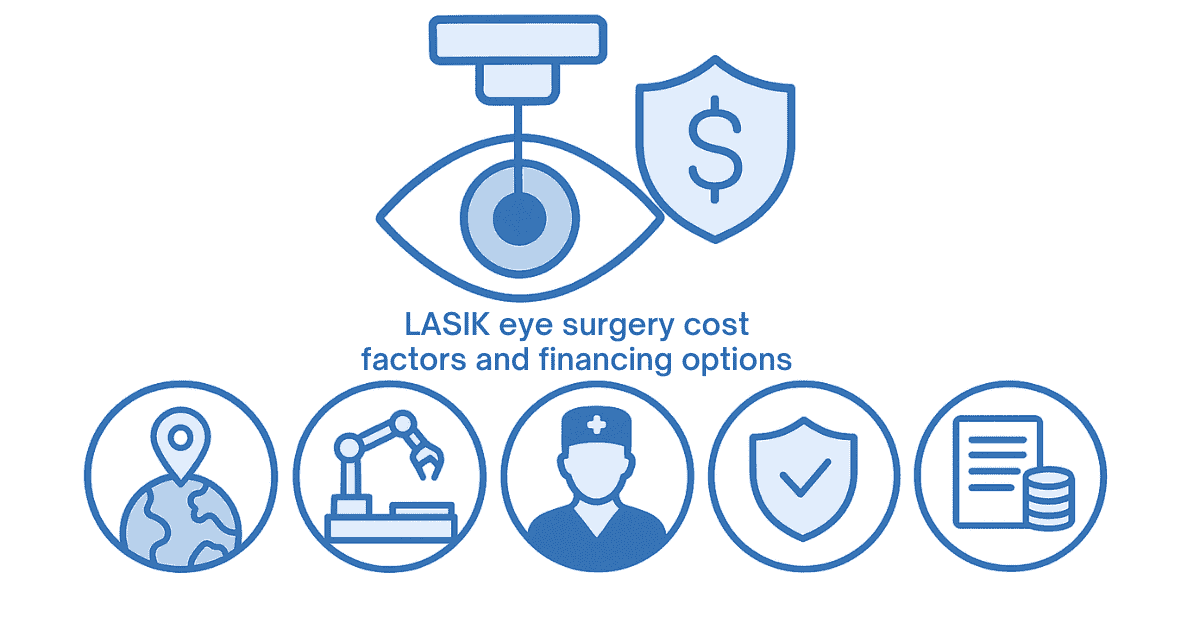
Alternatives to LASIK Eye Surgery
If your eye doctor determines that you are not an ideal candidate for lasik eye surgery, or if you prefer to explore other options for vision correction, several effective alternatives are available. Explore our comprehensive guide to safe LASIK alternatives for more insights. These procedures can also help reduce or eliminate the need to wear glasses or contact lenses. Each alternative has its own set of benefits, risks, and ideal candidate profiles.
Some common alternatives to laser eye surgery include:
- PRK (Photorefractive Keratectomy): PRK is another type of laser refractive surgery that, like LASIK, uses an excimer laser to reshape the cornea and correct vision problems. The main difference is that PRK does not involve creating a corneal flap. Instead, the eye surgeon removes the outermost corneal tissue layer (epithelium) entirely, applies the laser to reshape the underlying stroma, and then a protective bandage contact lens is placed on the eye while the epithelium regrows over several days. Recovery from PRK is typically longer and may involve more discomfort than LASIK, but it can be a better option for individuals with thin corneas, dry eyes, or those involved in activities with a higher risk of eye trauma. The long-term visual outcomes are very similar to LASIK.
- SMILE (Small Incision Lenticule Extraction): SMILE is a more recent laser eye surgery technique that is less invasive than LASIK. During SMILE, a femtosecond laser creates a small, lens-shaped piece of tissue (lenticule) within the cornea. The same laser then makes a tiny incision on the corneal surface, through which the eye surgeon removes the lenticule. This reshapes the cornea to correct vision, primarily nearsightedness and astigmatism. Because it doesn’t create a large flap, SMILE may offer advantages such as potentially lower risk of dry eye and better corneal biomechanical stability.
- Implantable Collamer Lenses (ICLs) or Phakic Intraocular Lenses (PIOLs): These are micro-thin lenses implanted inside the eye, typically between the iris and the natural lens, or in front of the iris. ICLs work like permanent contact lenses within the eye to correct vision. They are often a good option for individuals with very high levels of nearsightedness, farsightedness, or astigmatism that are beyond the range treatable by LASIK or PRK, or for those with thin corneas. The natural lens of the eye is not removed, and the procedure is reversible if necessary. These can provide excellent quality of vision, particularly for those who struggle to see objects close or experience vision blurry without strong correction. If you’re unsure which option is best for your eyes, see our detailed ICL vs LASIK comparison guide.
- Refractive Lens Exchange (RLE): Also known as clear lens exchange, RLE is similar to cataract surgery. The eye’s natural lens is removed and replaced with an artificial intraocular lens (IOL) that corrects the refractive error. RLE is often considered for older individuals, particularly those with early signs of cataracts or high hyperopia (farsightedness), and it can also address presbyopia (the need for reading glasses) if multifocal or extended-depth-of-focus IOLs are used.
Your eye doctor or a specialized eye surgeon can perform a thorough evaluation to discuss these alternatives in detail. They will help you understand which procedure, whether it’s laser eye surgery or another option, is most suitable for your specific vision needs, eye health, and lifestyle. The goal is to find the safest and most effective path to clearer vision for you.
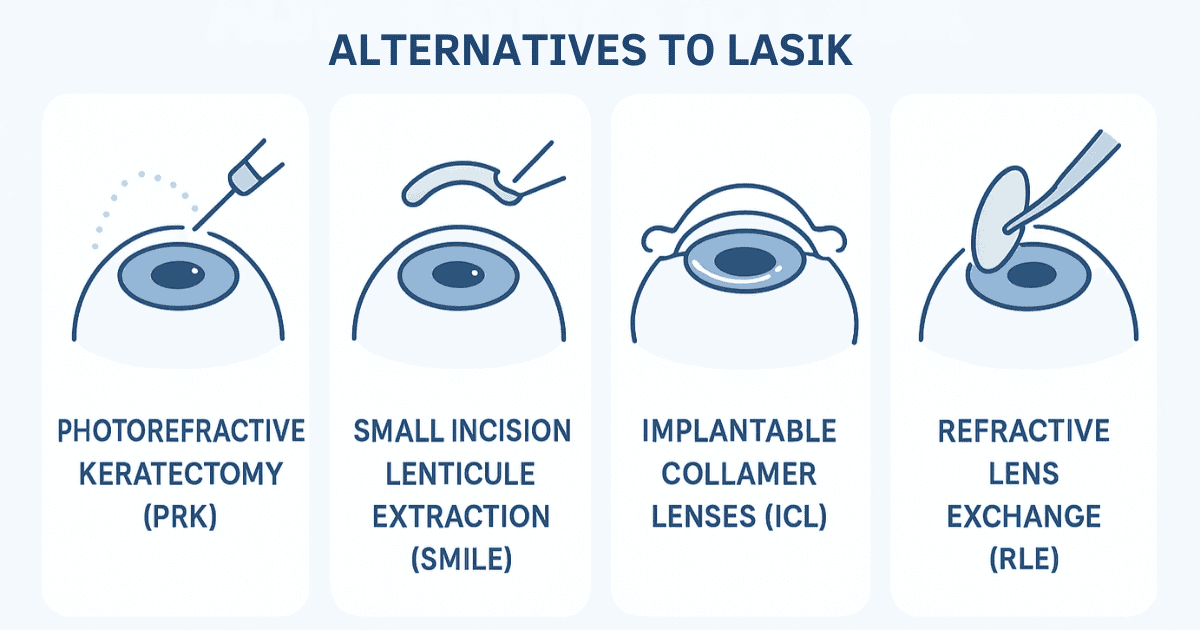
Comparing Vision Correction Surgeries
To help you understand the differences, here’s a brief comparison of common refractive surgeries:
| Feature | LASIK | PRK | SMILE | ICL |
|---|---|---|---|---|
| Procedure Type | Laser (flap created) | Laser (epithelium removed) | Laser (lenticule extraction) | Implantable lens |
| Corneal Flap | Yes | No | No (small incision) | Not applicable (internal lens) |
| Typical Recovery Speed | Fast (1-2 days) | Slower (days to weeks) | Fast (similar to LASIK) | Fast (1-2 days) |
| Post-Op Discomfort | Mild, short-lived | Moderate, few days | Mild, short-lived | Minimal |
| Dry Eye Risk | Moderate | Lower than LASIK | Potentially lowest among lasers | Low, not directly related to cornea |
| Ideal For | Common refractive errors, adequate corneal thickness | Thinner corneas, active lifestyles, dry eye concerns | Nearsightedness, astigmatism, potentially lower dry eye risk | High refractive errors, thin corneas |
This table provides a general overview. An eye surgeon can provide personalized advice after a full eye examination and discussion of your vision correction goals.
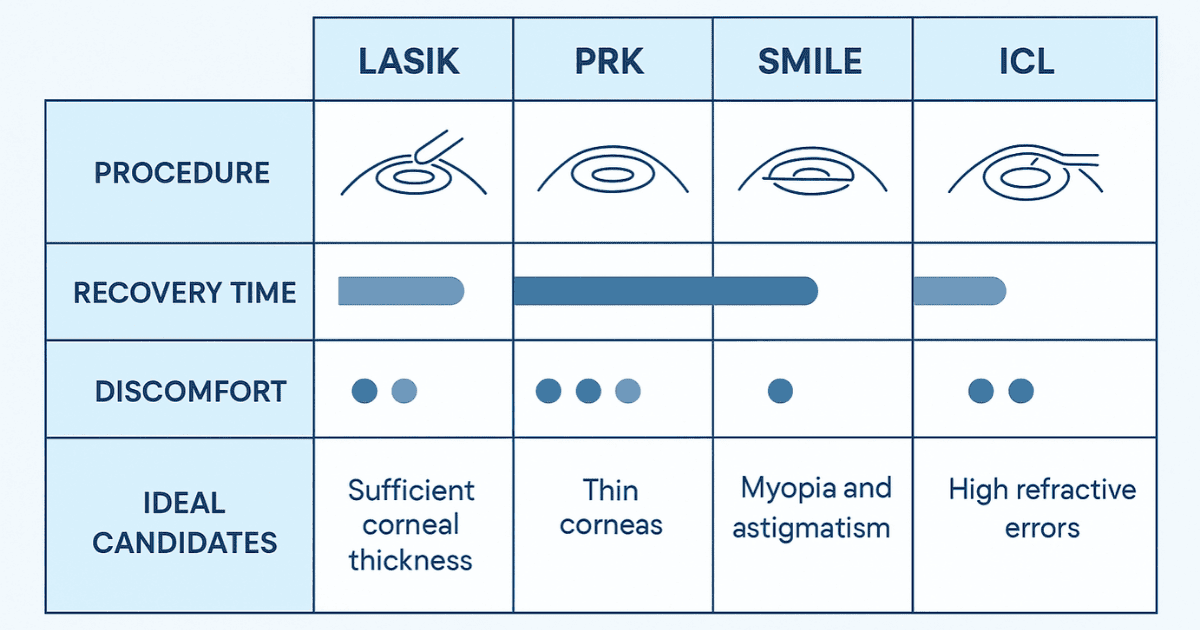
FAQs
Frequently Asked Questions About LASIK
LASIK surgery involves creating a thin flap in the cornea, which is then lifted and reshaped using an excimer laser to correct vision. The flap is then replaced in its original position, and the cornea heals naturally.
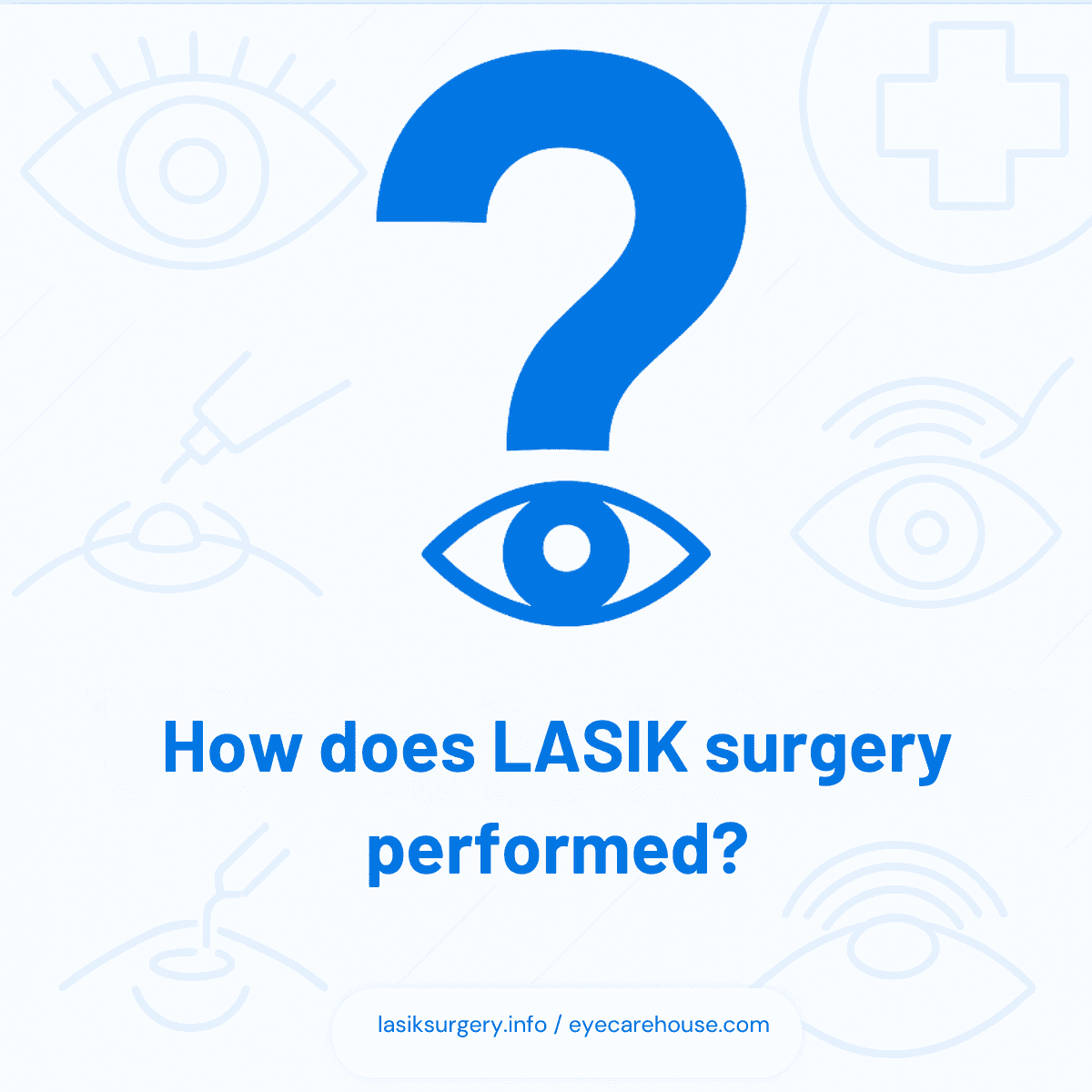
LASIK involves creating a flap in the cornea, whereas PRK involves removing the top layer of the cornea (epithelium) to reshape the underlying tissue. Both procedures achieve similar results, but LASIK has a faster recovery time.
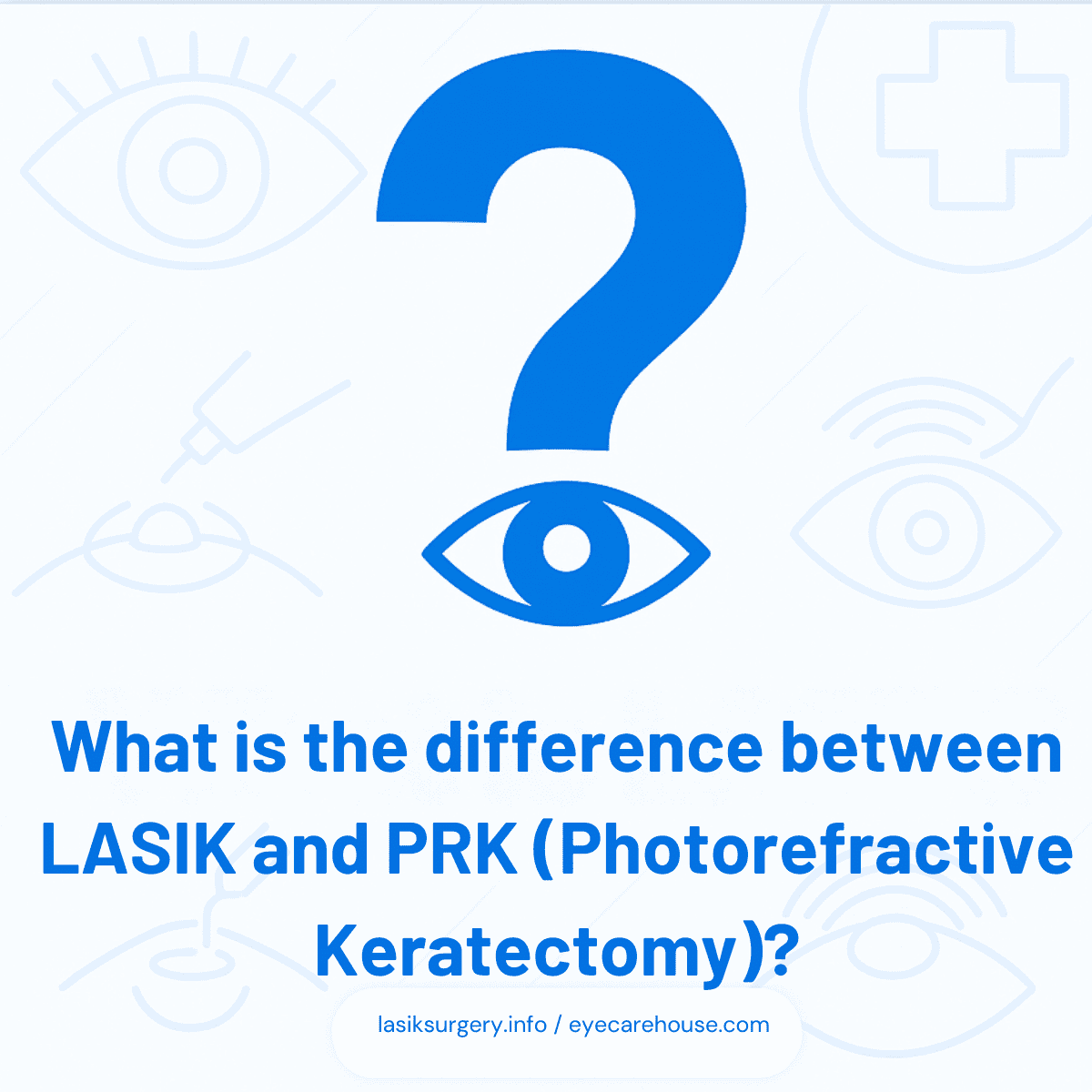
A good candidate for LASIK eye surgery is someone who is at least 18 years old, has a stable prescription, and is in good overall health.
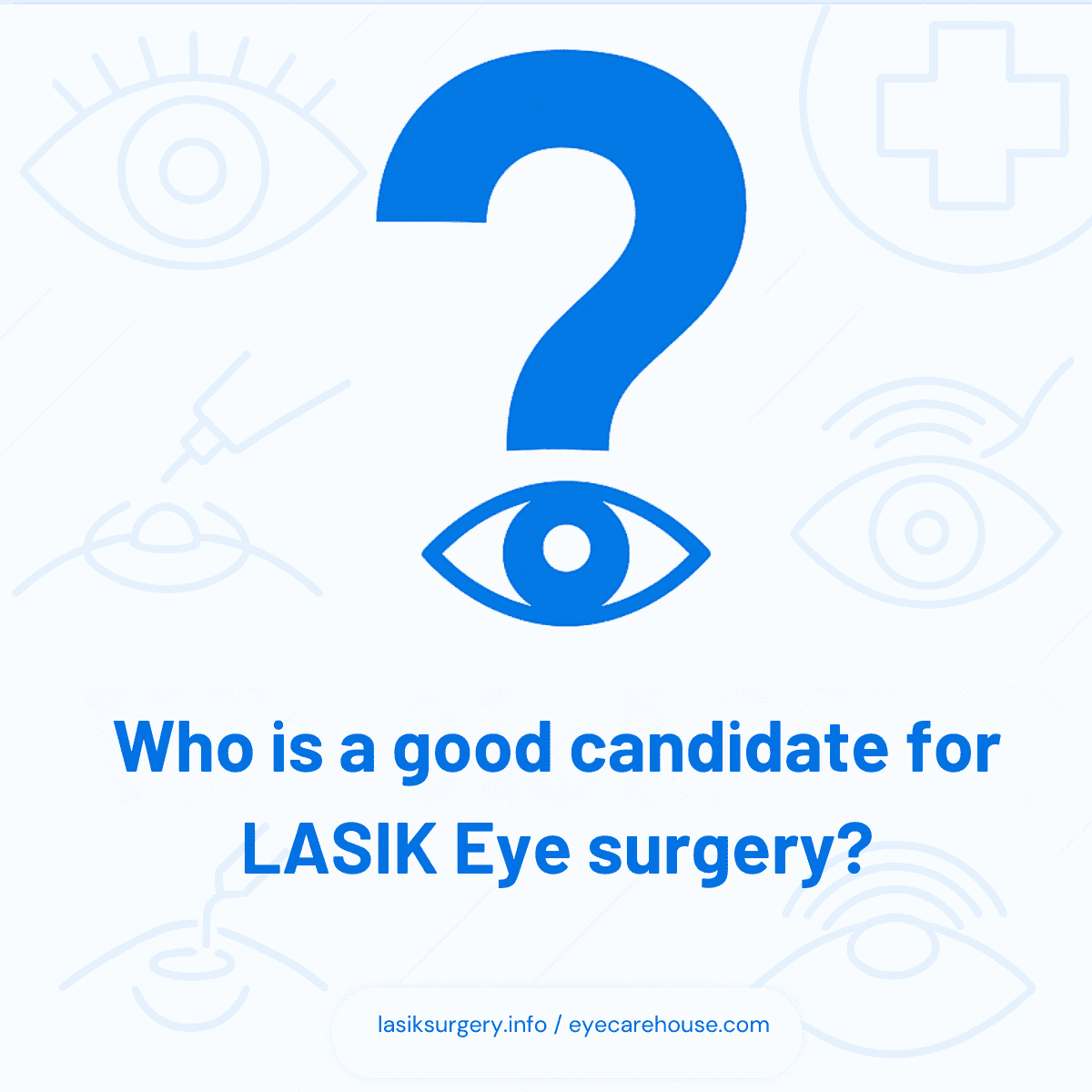
It’s possible to have LASIK Eye surgery if you have dry eyes, but your doctor will assess the severity of your condition before proceeding.
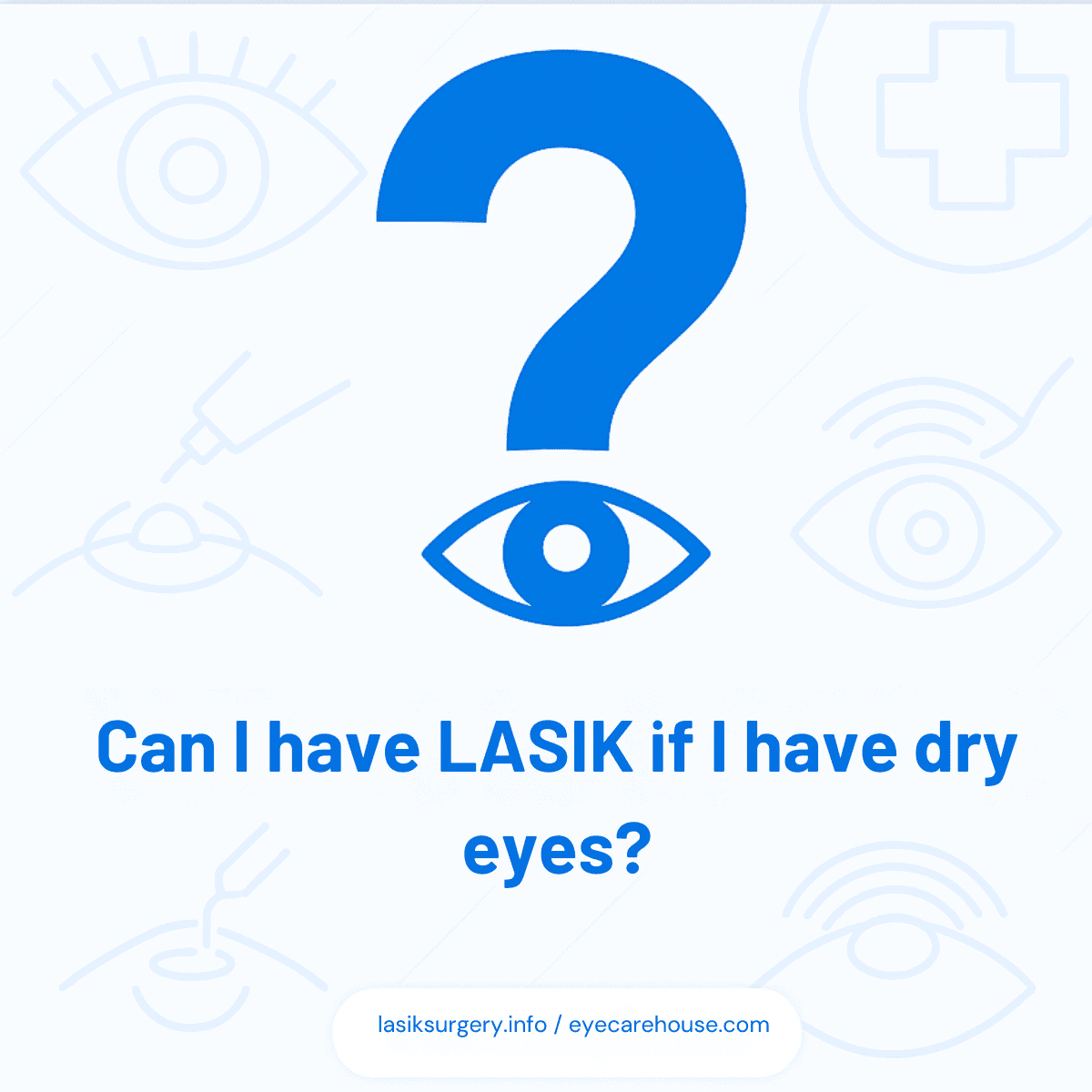
Potential risks include dry eye, infection, under/overcorrection, and halos. These are rare and often treatable.
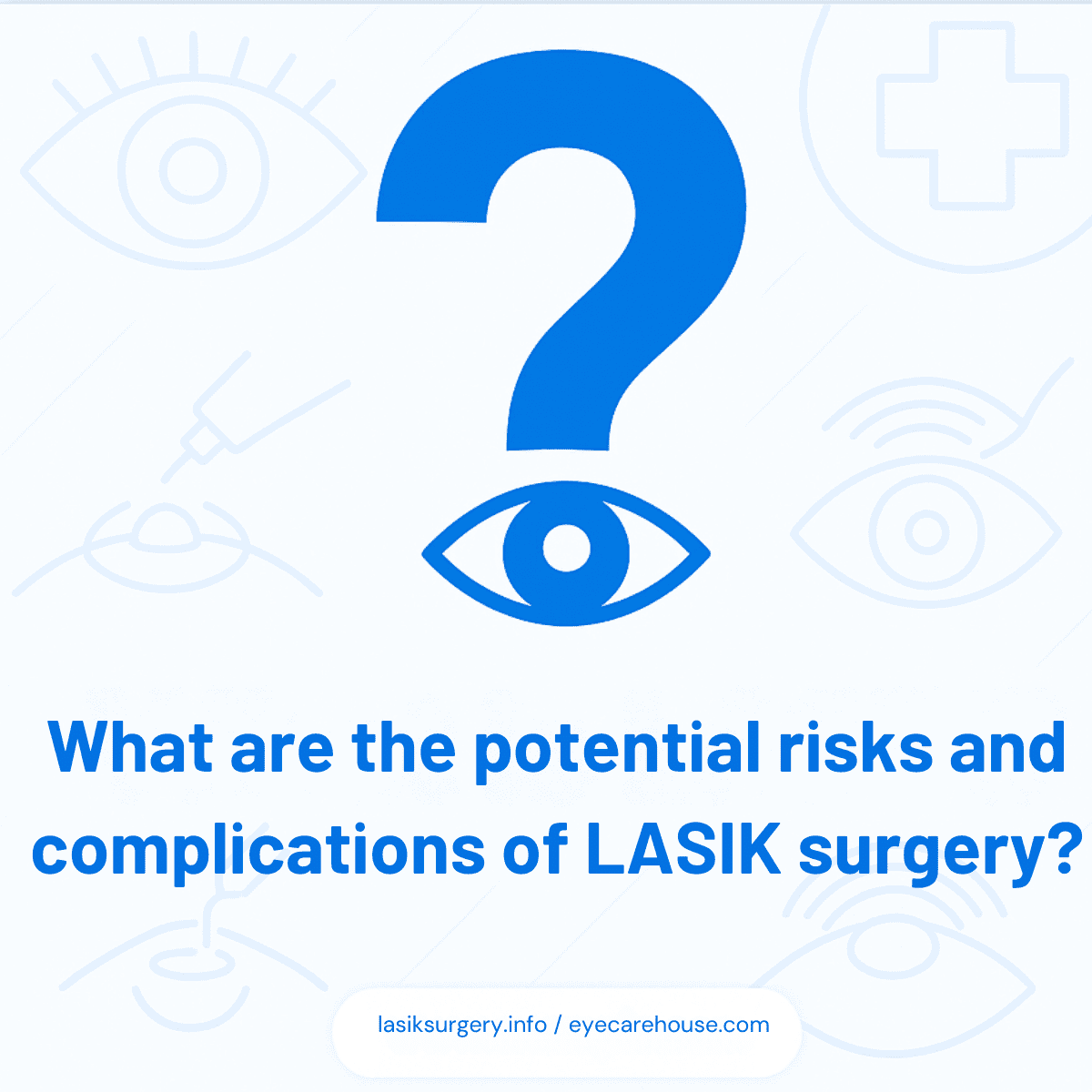
Most people recover within a few days, but it may take weeks for vision to fully stabilize.
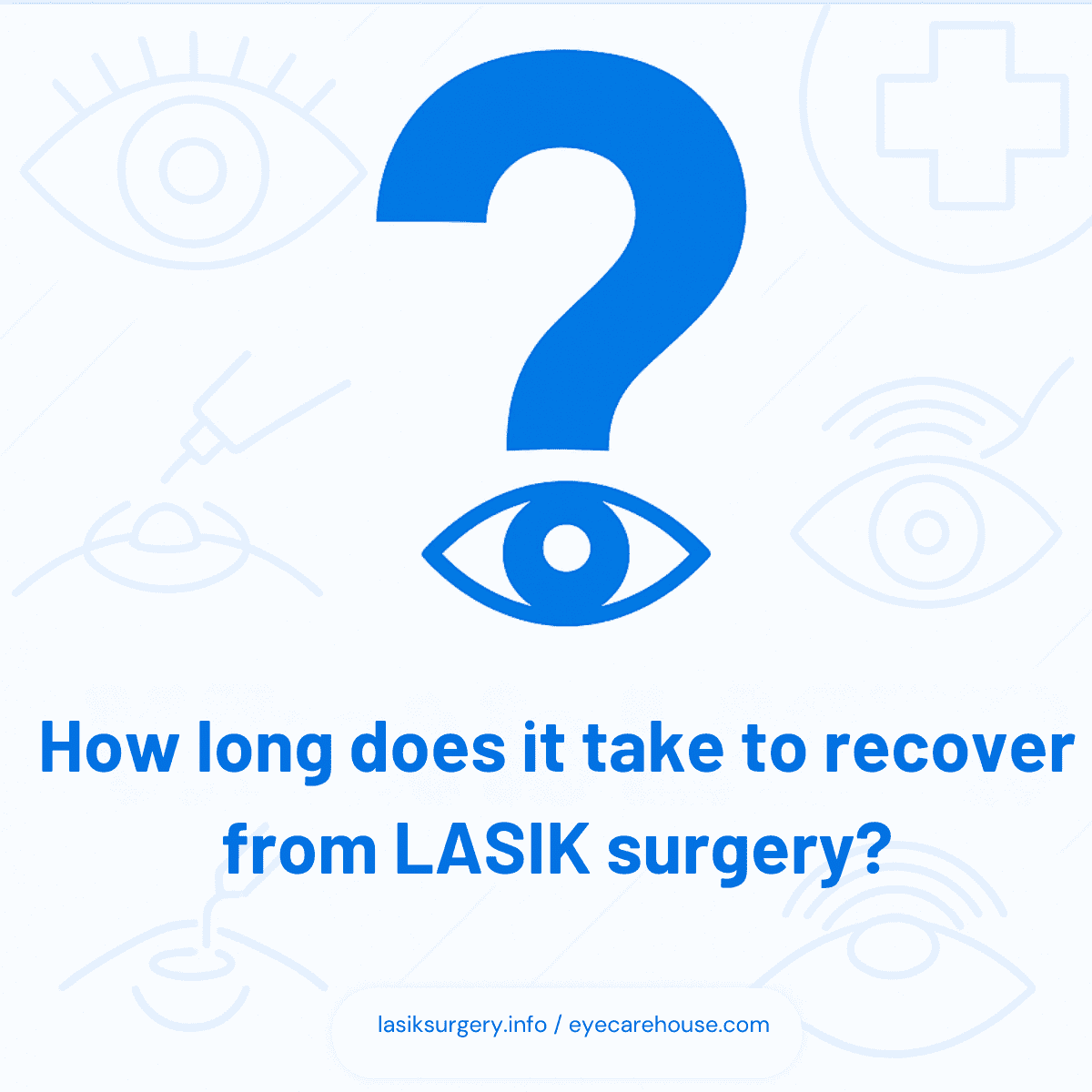
Yes, you may need to take a few days off for rest and recovery.
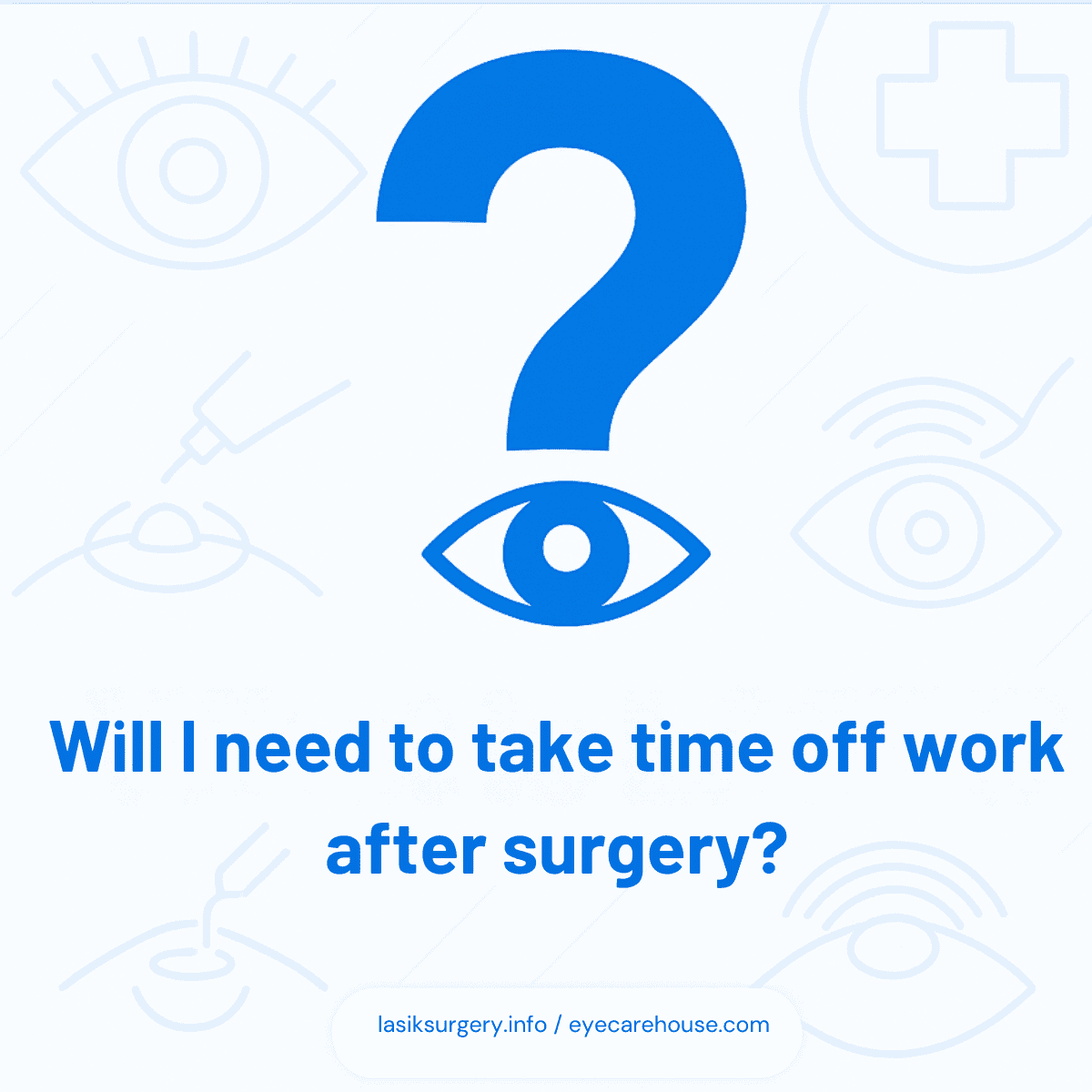
LASIK typically costs between $2,000–$3,000 per eye in the US, depending on the provider.
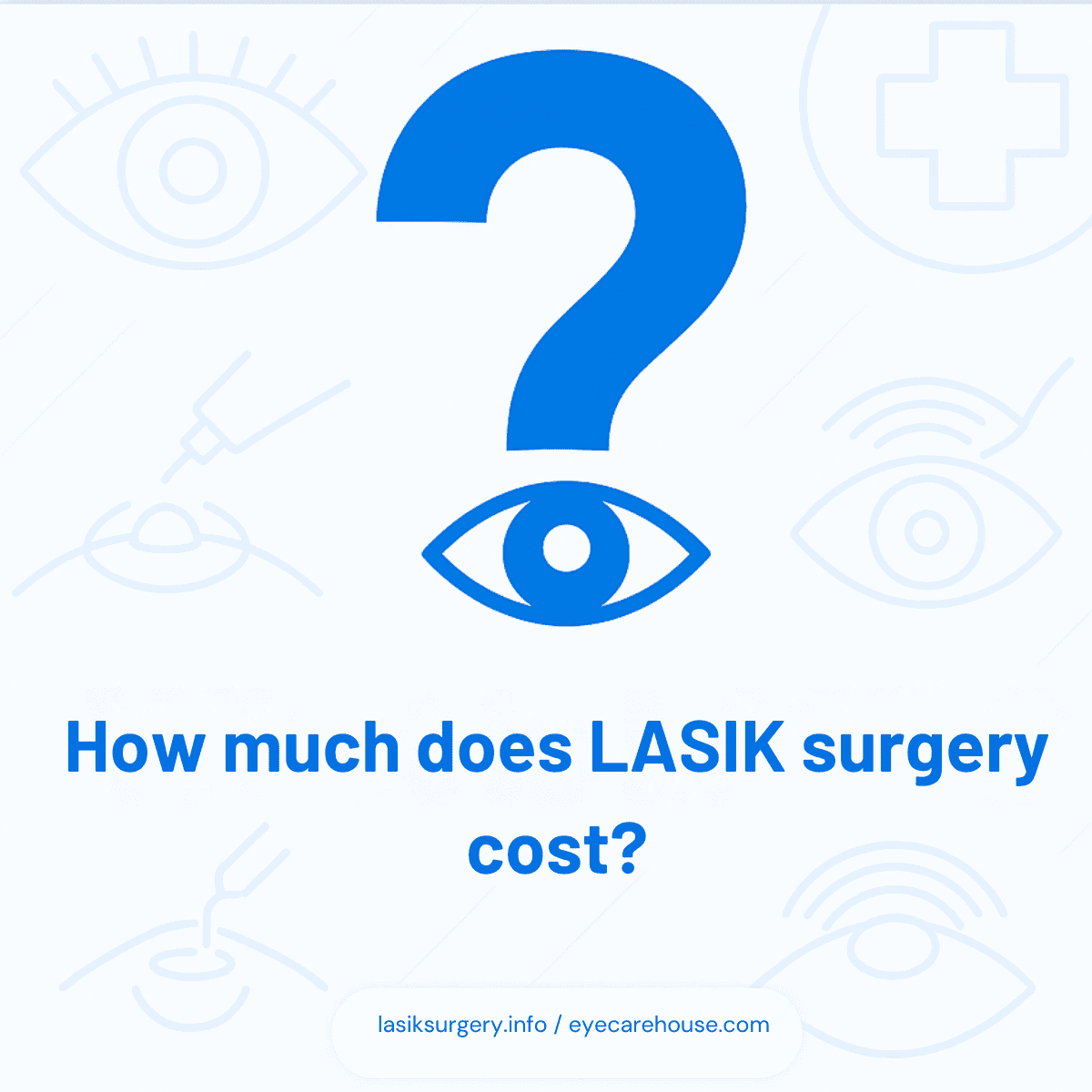
Yes, options like PRK, implantable lenses, and refractive lens exchange may be considered.
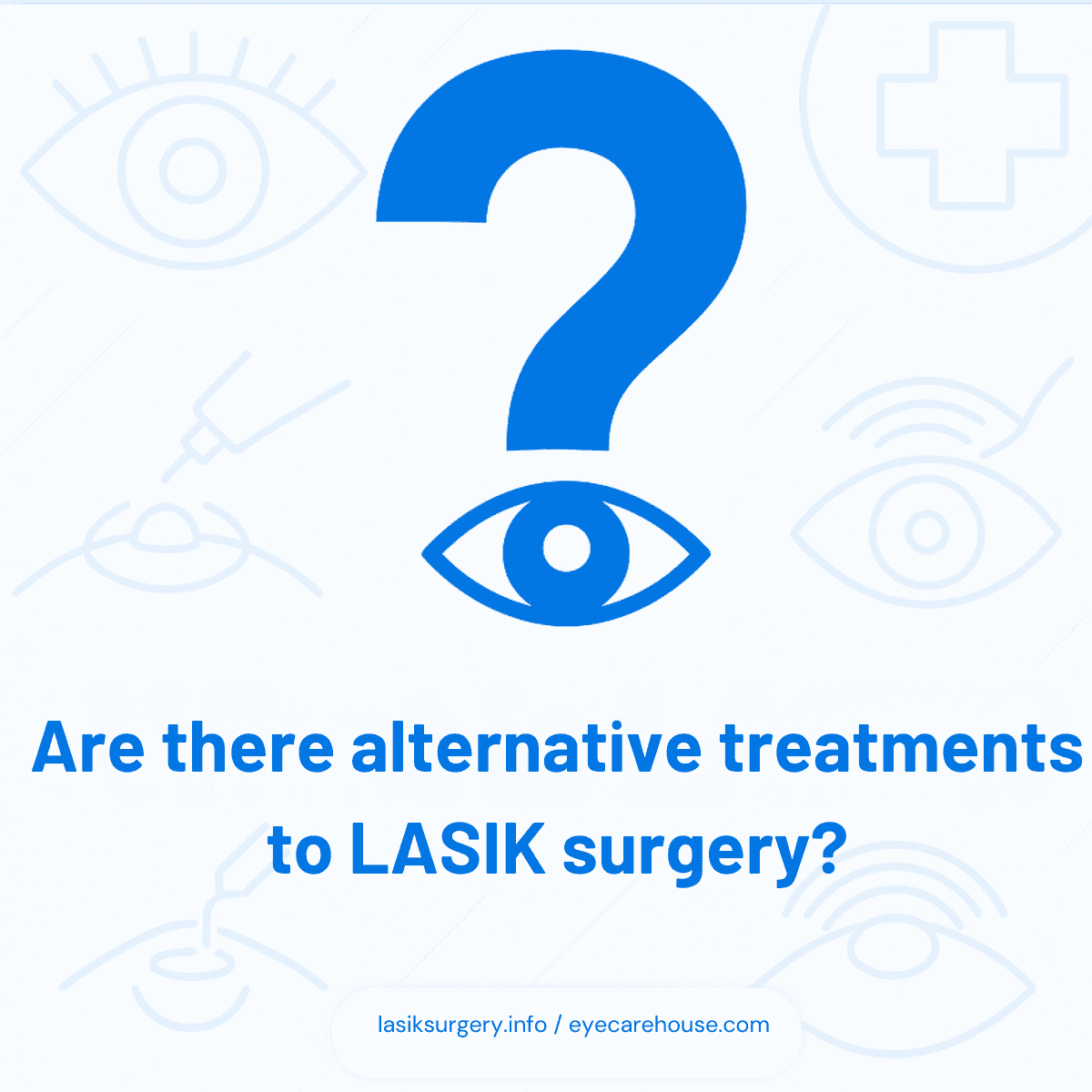
Most patients achieve 20/20 vision or better, though some may still need corrective lenses.
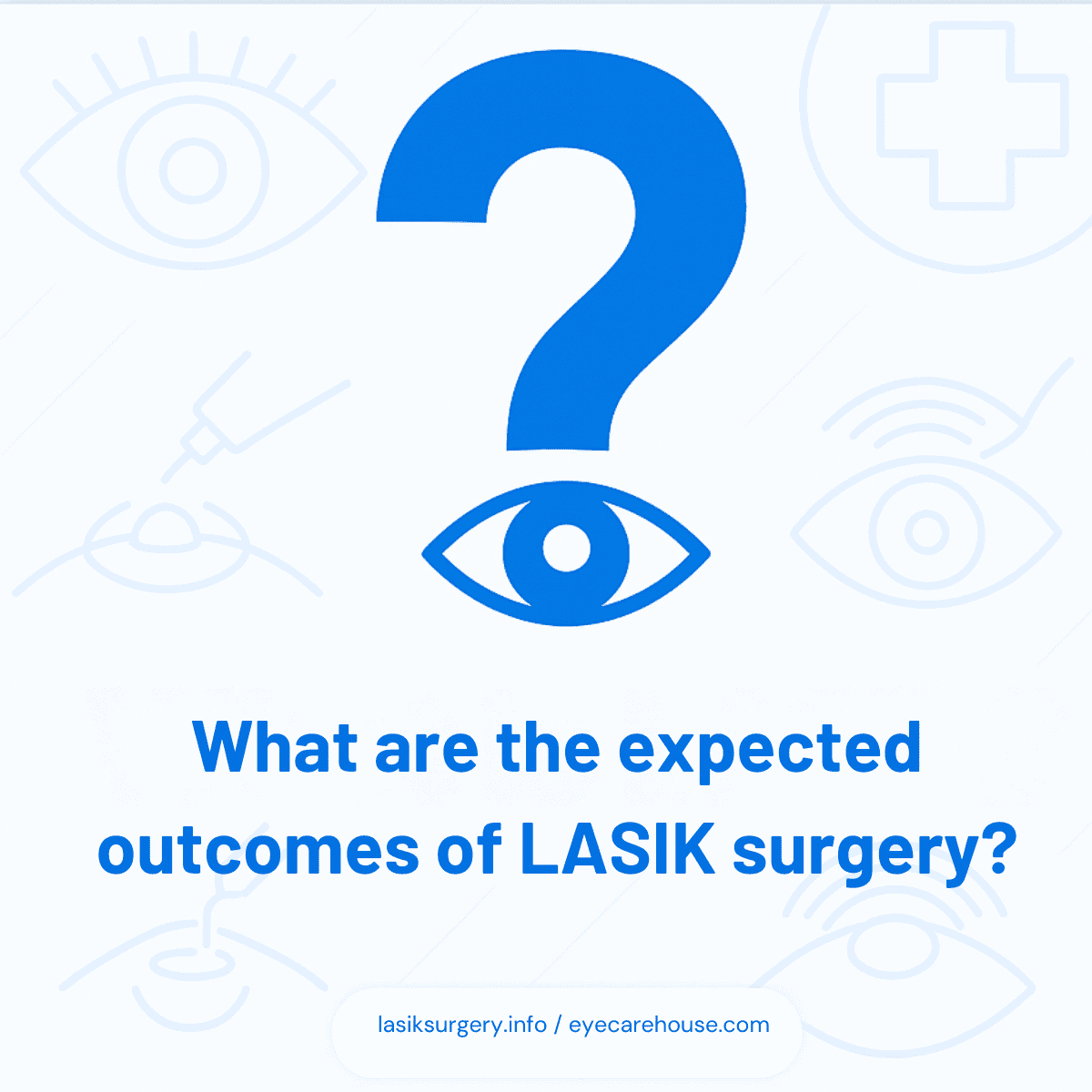
LASIK does not correct presbyopia, which may still require reading glasses.
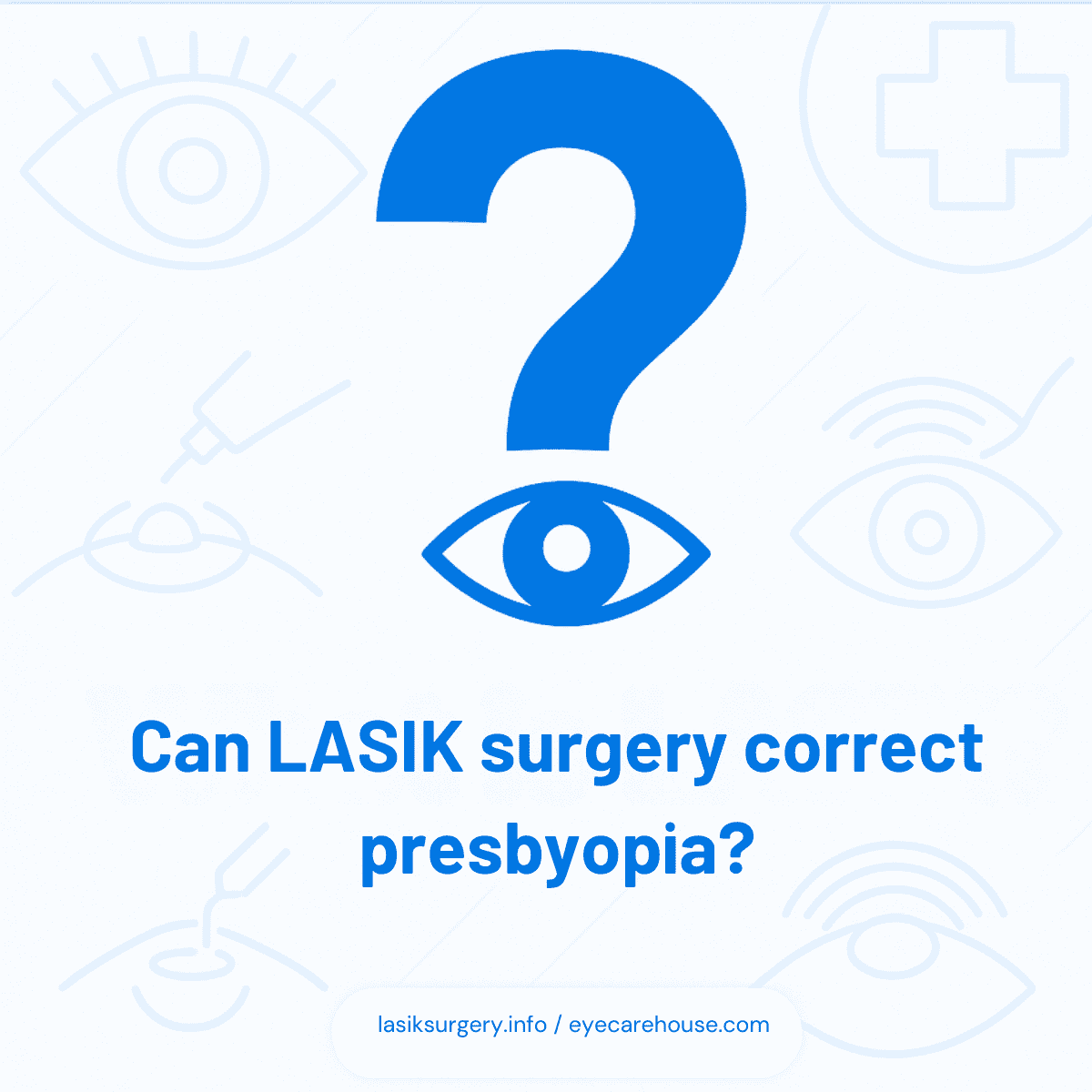
No, LASIK is virtually painless due to numbing drops used before the procedure.
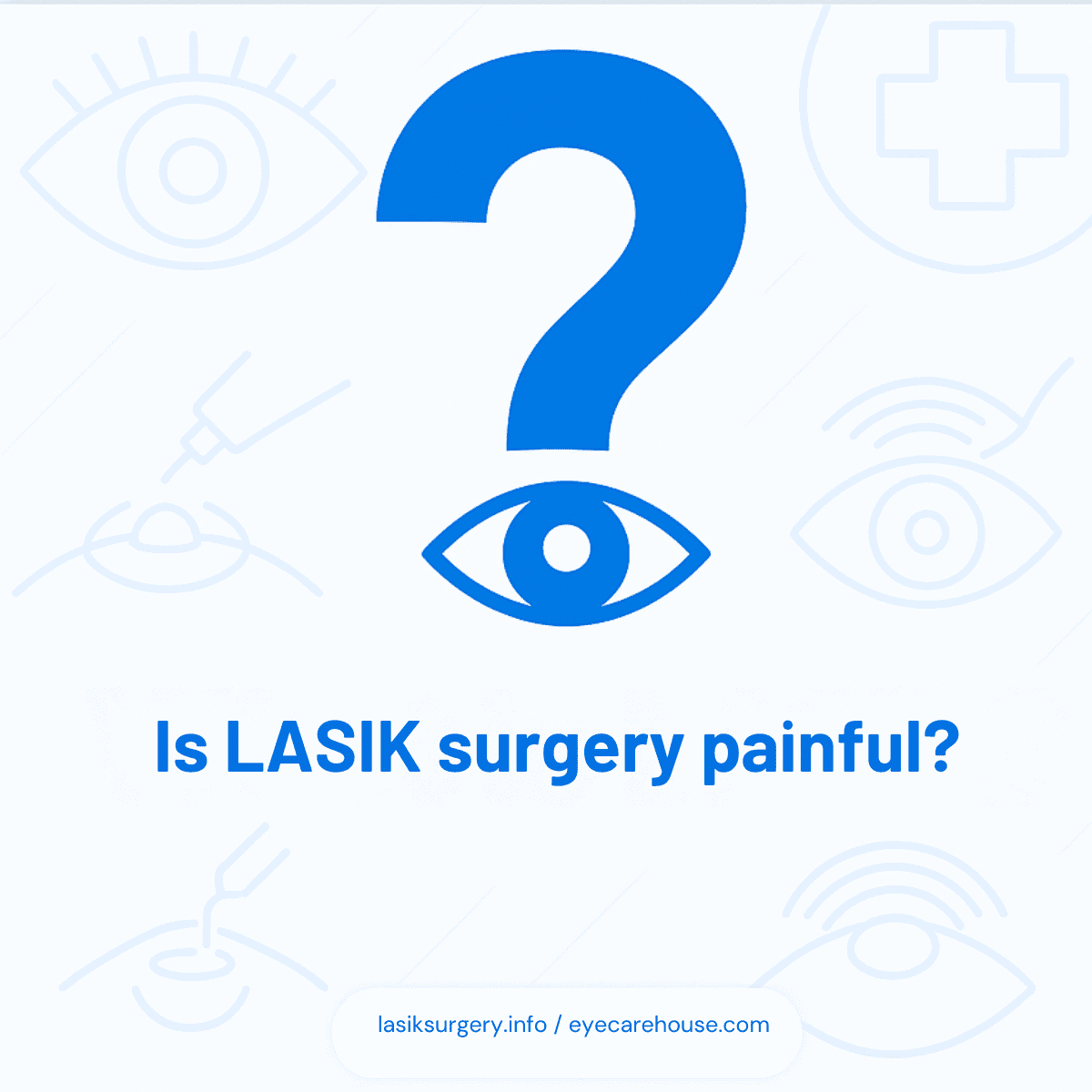
LASIK is permanent, but changes in your eyes may require future adjustments.
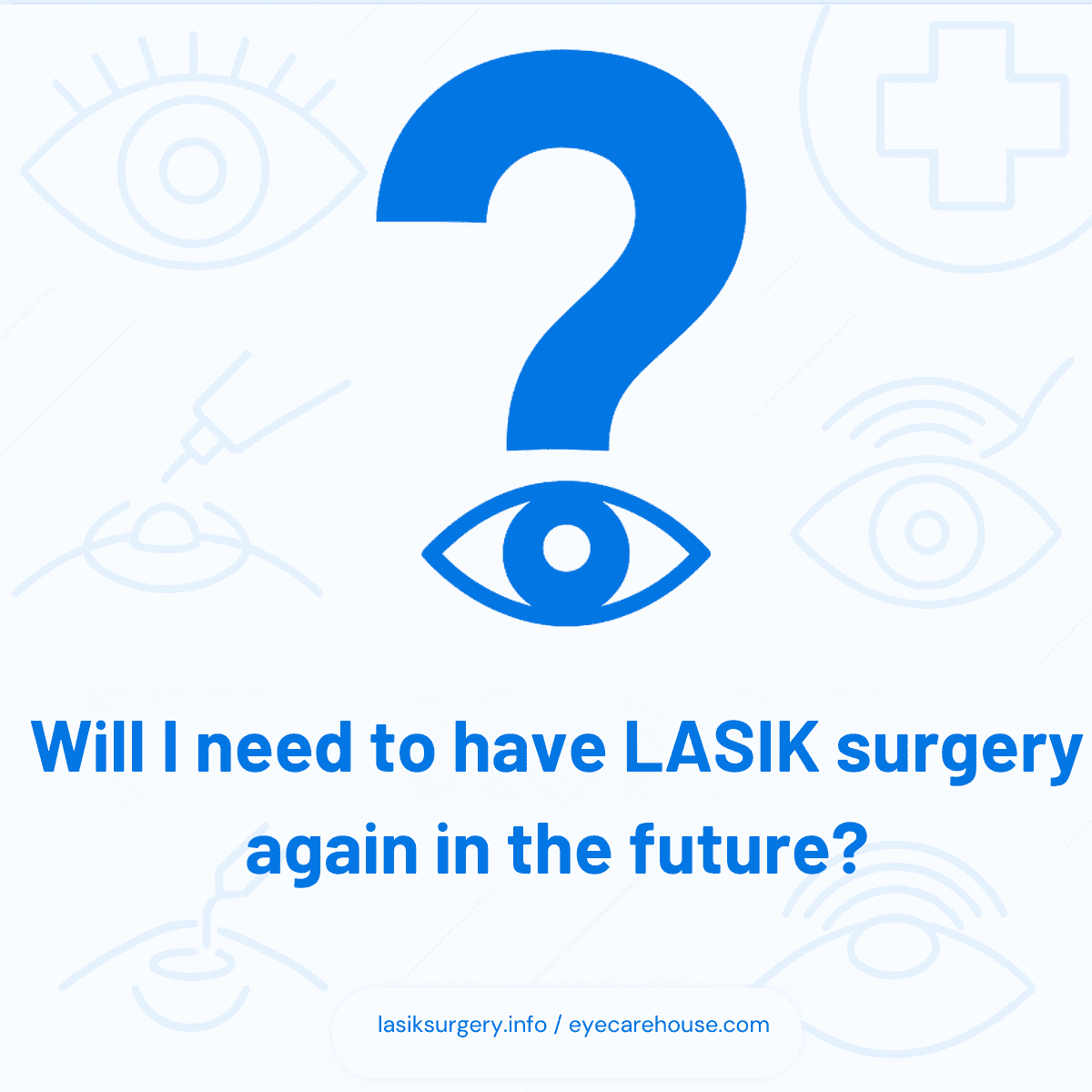
It’s generally recommended to wait until after pregnancy or breastfeeding due to hormonal changes.
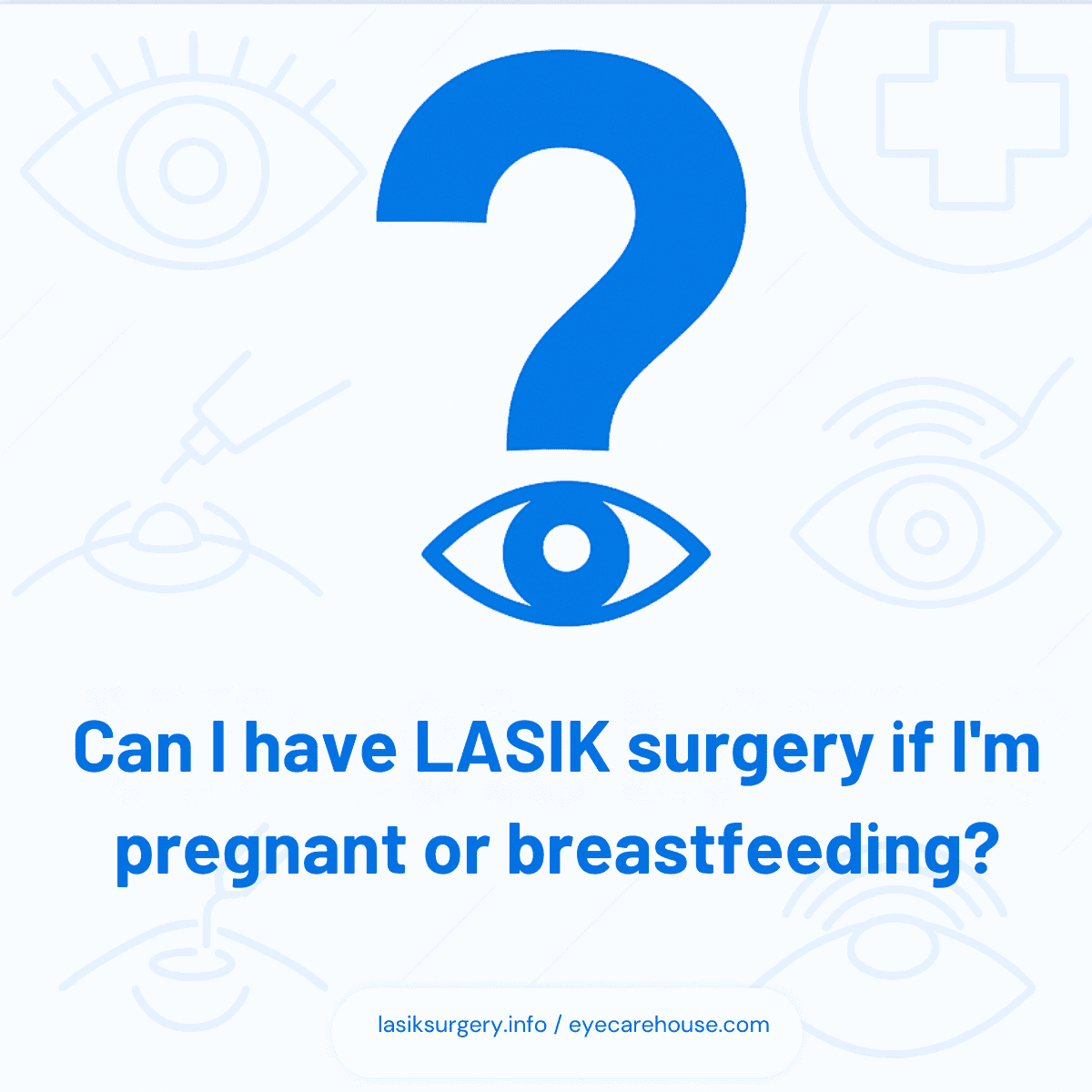
Conclusion
Lasik eye surgery has revolutionized vision correction, helping millions of individuals improve their sight and significantly reduce their daily dependence on glasses or contact lenses. It is a quick and often transformative lasik procedure with a relatively short recovery period for most people seeking clearer vision. The laser removes corneal tissue with incredible precision to correct refractive errors and help light rays focus correctly.
However, laser eye surgery is not a one-size-fits-all solution, and it’s not suitable for everyone. Careful consideration of your eye health, the stability of your vision problems, and lifestyle needs is important. Discussing your options thoroughly with an experienced eye doctor or eye surgeon is the most critical step. They can evaluate your eyes, explain the potential benefits and risks, including the possibility of experiencing severe dry eyes or other side effects, and help you decide if LASIK or an alternative vision correction surgery is the right choice for your journey towards better sight and freedom from constantly needing to wear glasses.


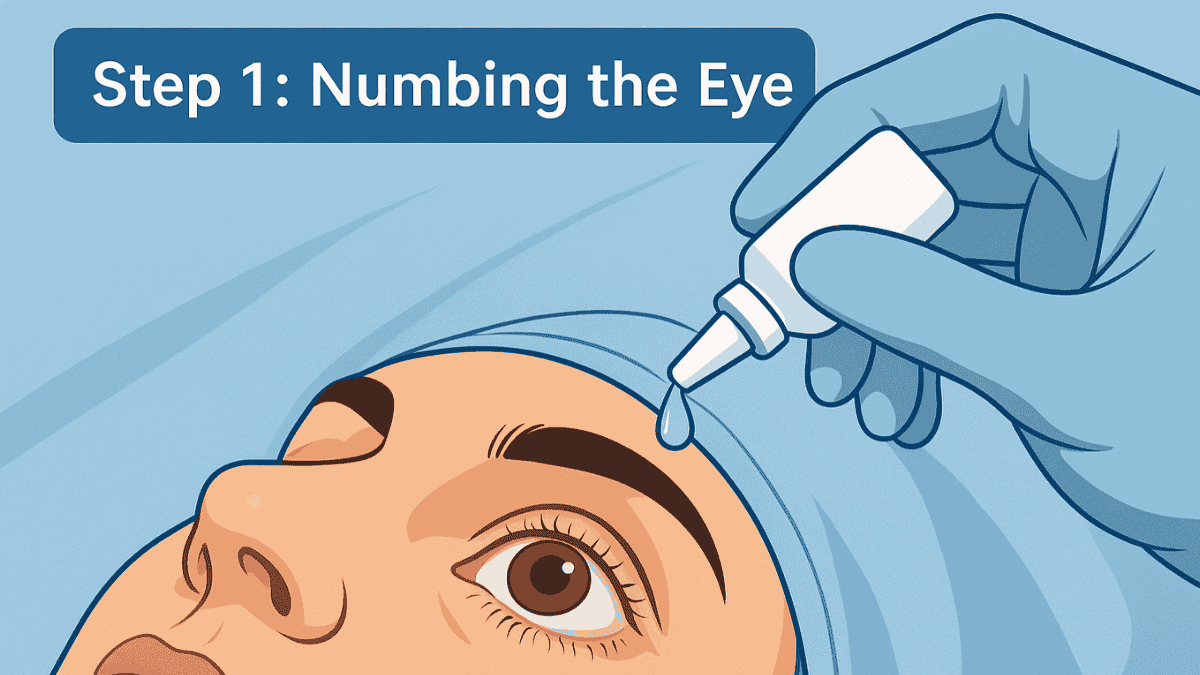
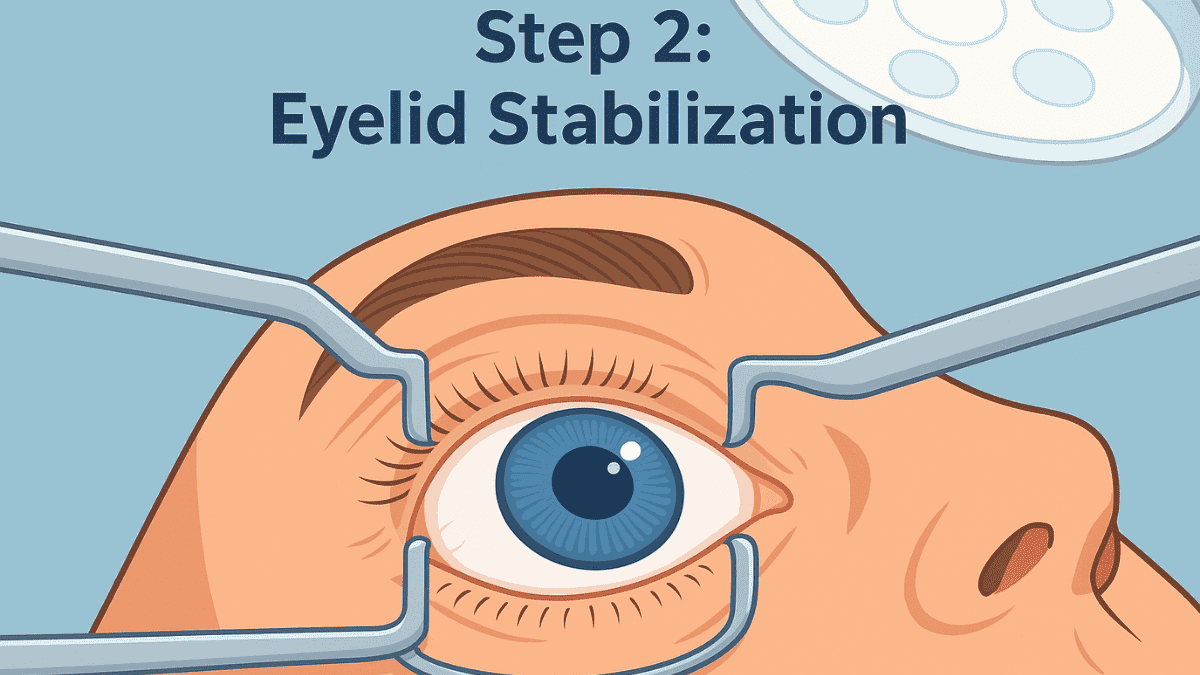
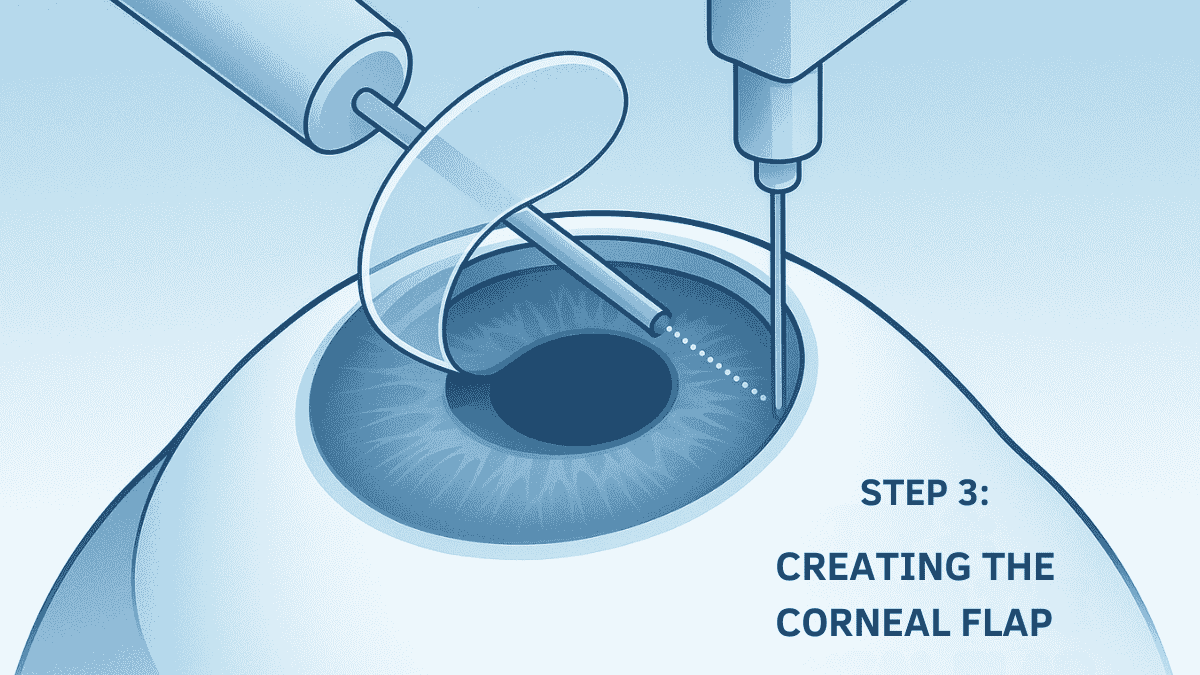
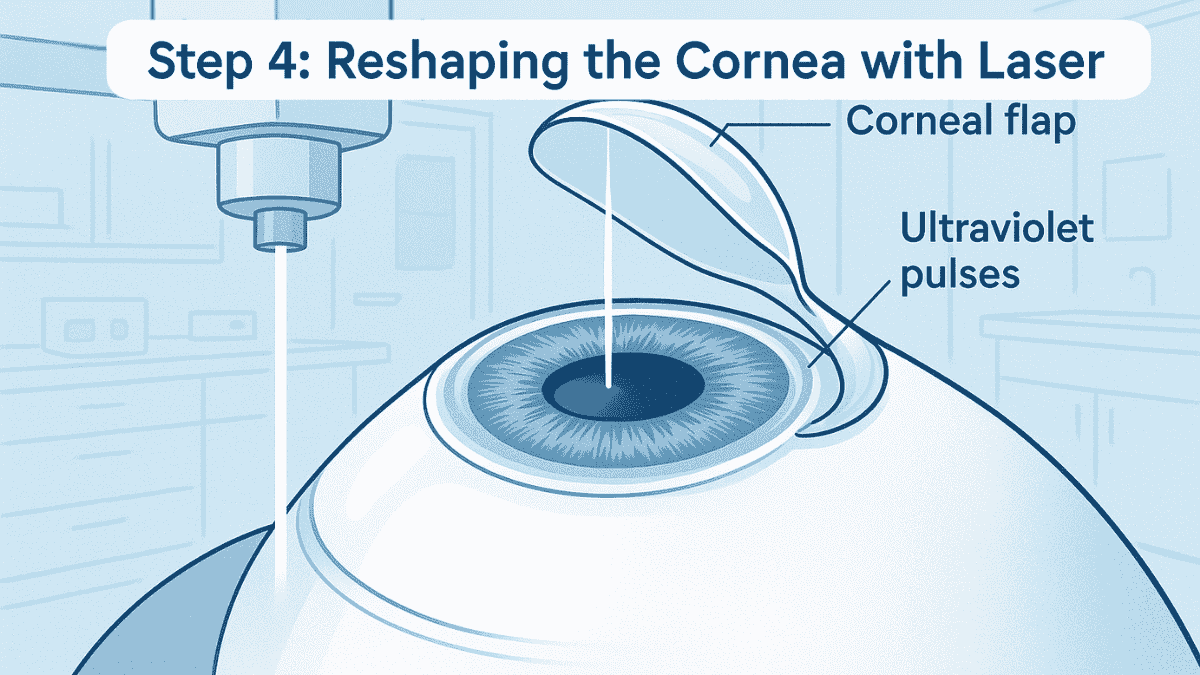
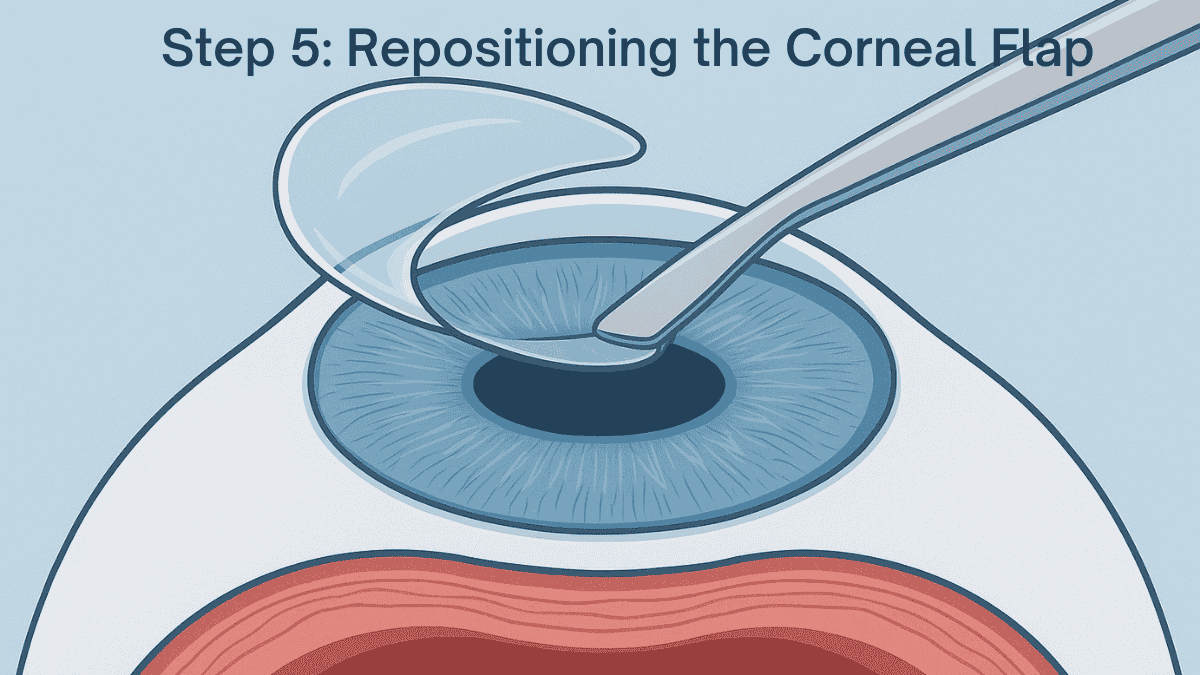
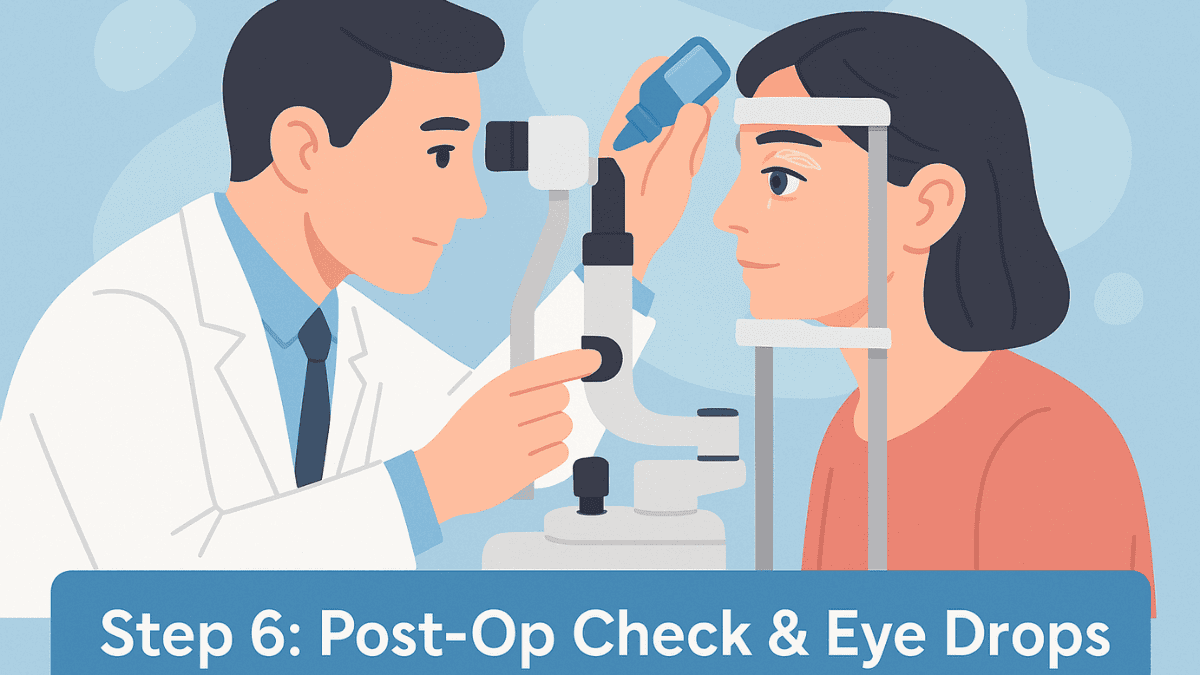
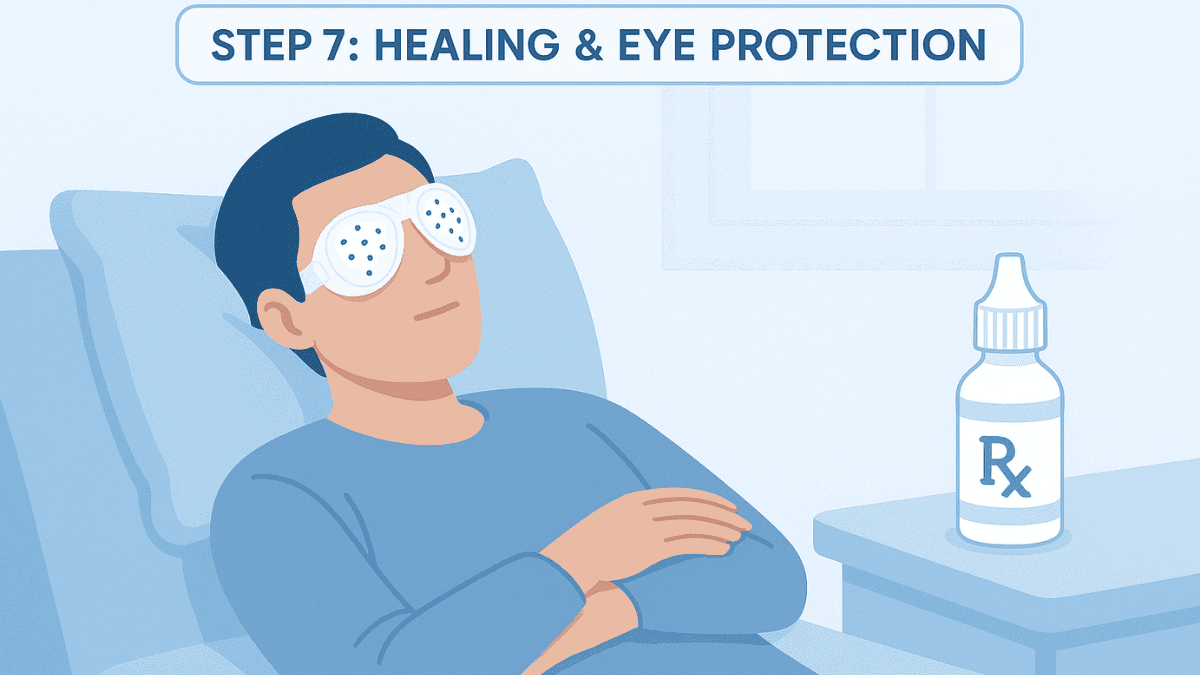
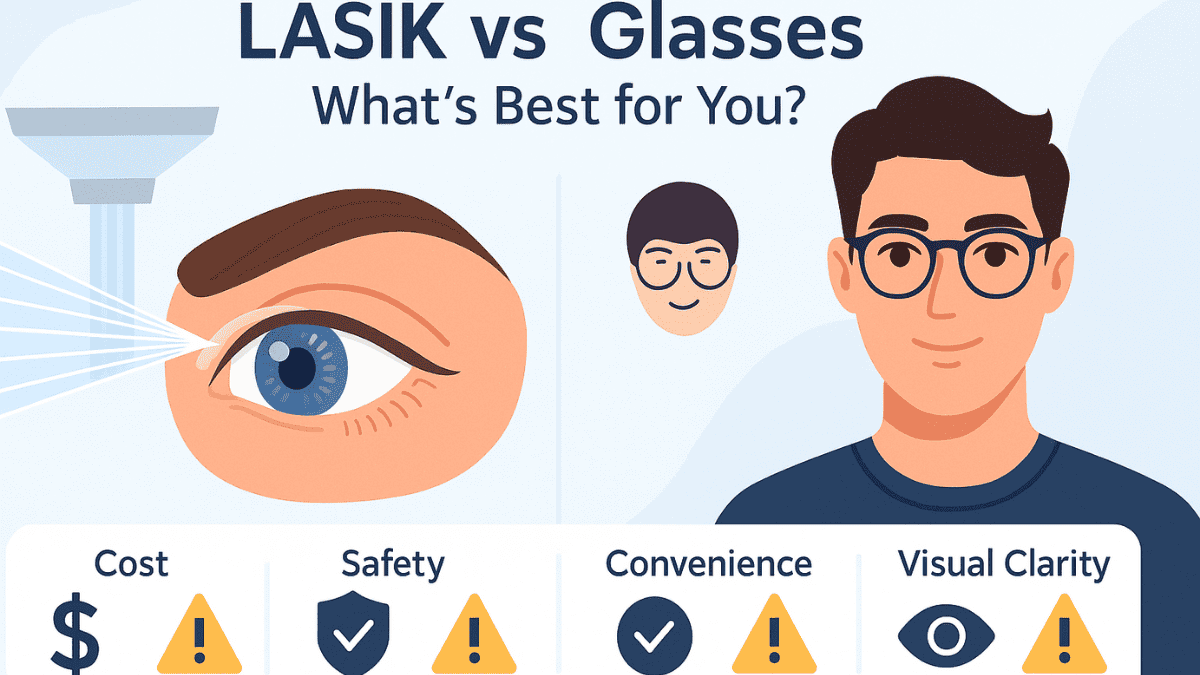
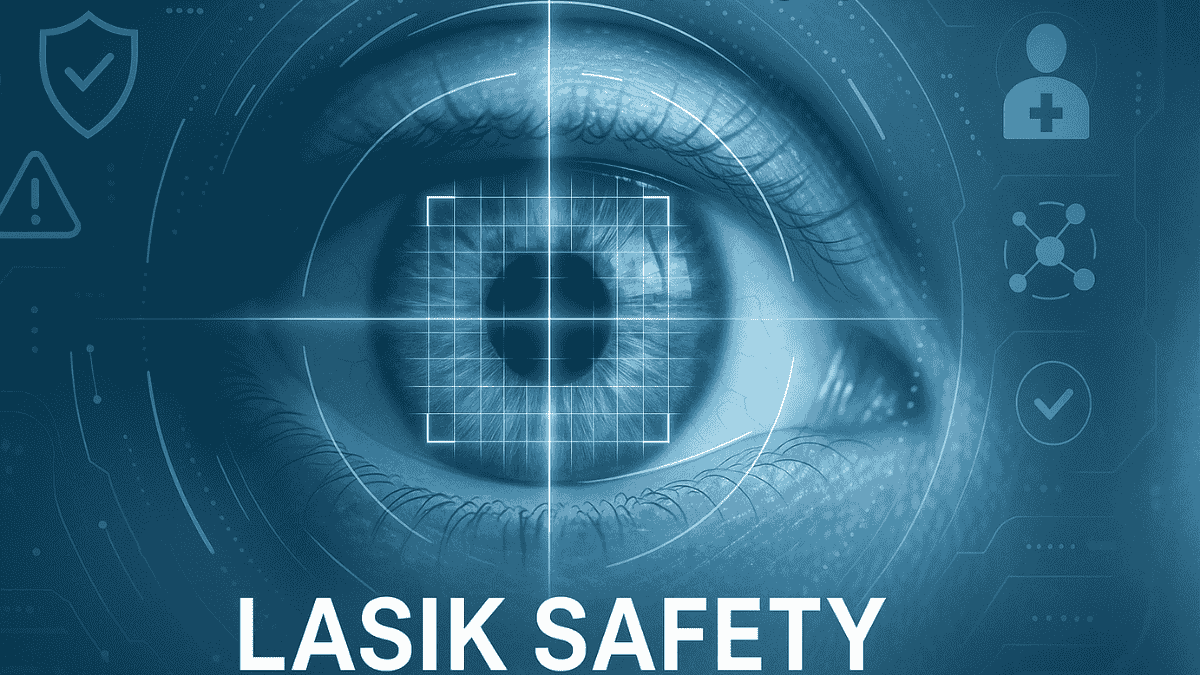

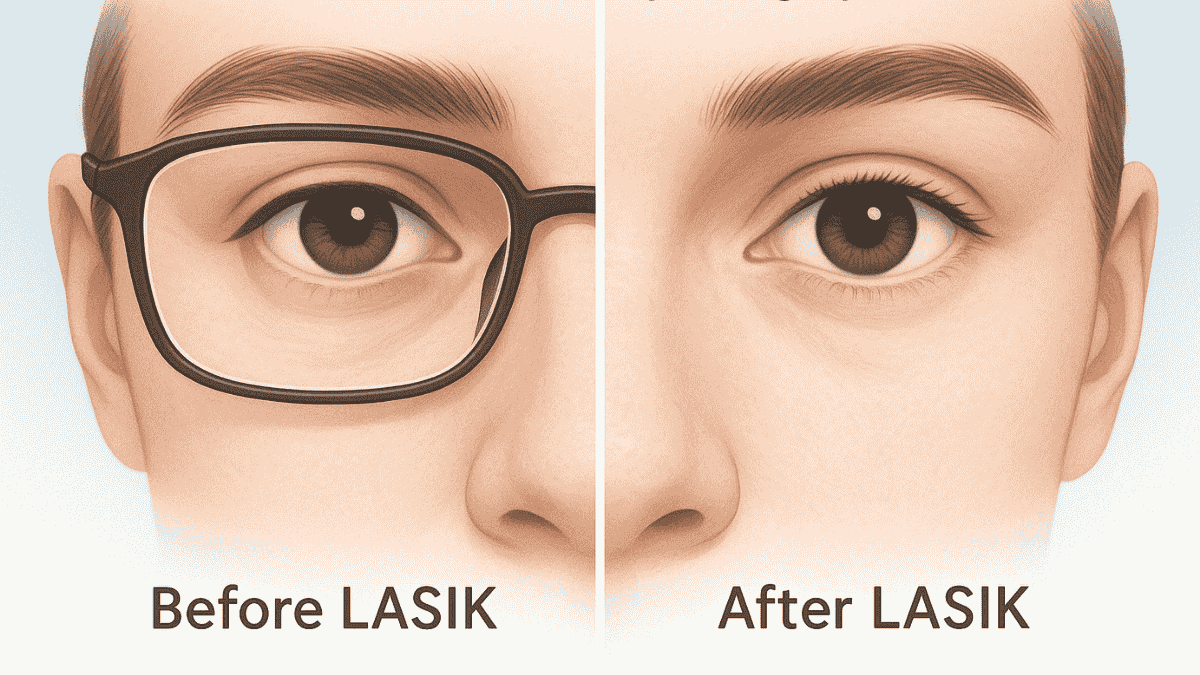
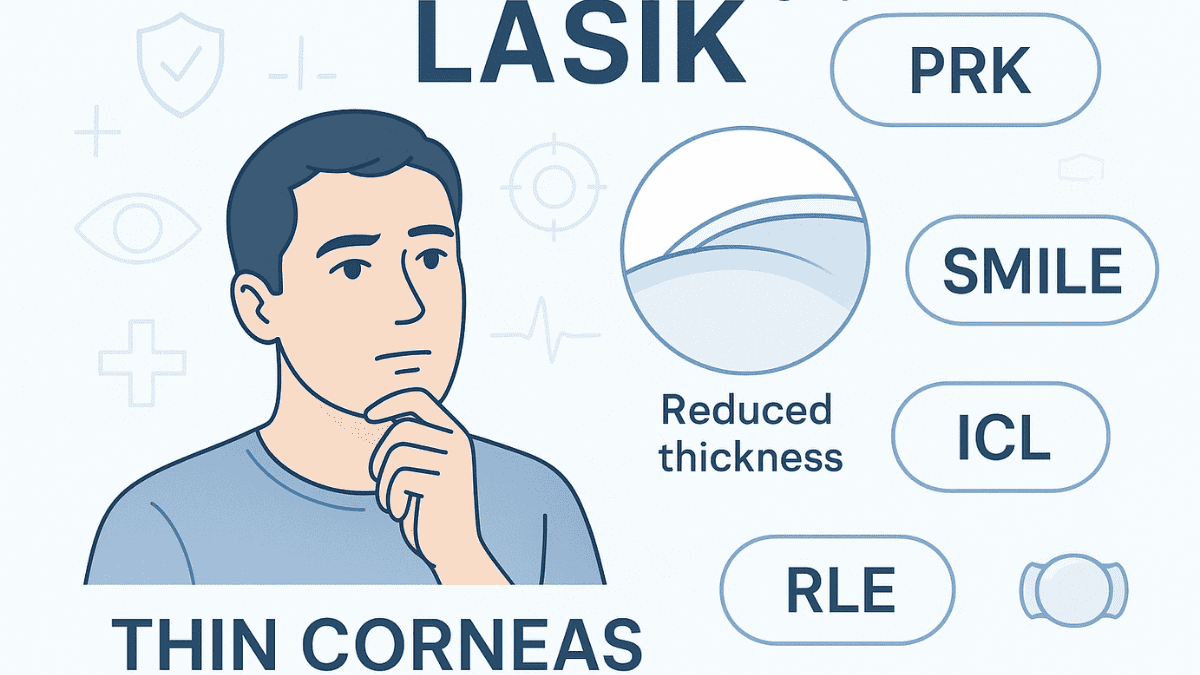
I’ve been considering LASIK, but I’m concerned about night vision problems afterward. How common are they?
Night vision problems—such as halos, glare, or starbursts—can occur after LASIK, but they are typically temporary and improve over time. However, their likelihood can vary depending on your individual eye structure, pupil size, and the laser technology used.
Since every case is unique, we strongly recommend consulting a qualified eye surgeon for personalized advice.
How do I know if my corneas are thick enough for LASIK surgery?
Will the LASIK consultation also check for dry eyes? I’ve had issues with that before.
Yes, a comprehensive LASIK consultation typically includes screening for dry eye symptoms. Since dry eyes can affect both candidacy and recovery, your eye doctor will likely assess your tear film and ocular surface health.
However, if you’ve had recurring issues with dry eyes, it’s essential to discuss them in detail during your consultation. Only a licensed specialist can evaluate whether LASIK is a suitable option in your case.